*FYI - this post may contain affiliate links, which means we earn a commission at no extra cost to you if you purchase from them. Also, as an Amazon Associate I earn from qualifying purchases. Check out our Privacy Policy and Disclosure. for more info.
If you’ve clicked over to this frighteningly long list of England travel tips, that must mean you’re soon headed to England for the first time… and I won’t lie – I’m irrationally jealous of you.
My first visit to England was a glorious mix of bucket list check-offs, giggling at things like “spotted dick pudding”, and trying not to accidentally die while crossing the street. It was an incredible time, and I still nostalgically look back on that trip fondly.
Now, years later (thanks largely to my English boyfriend) I’ve spent the better part of a decade exploring all corners of this scenic country, and I’m condensing that experience into this list of travel tips for England.
So, if you want to travel England with my sage (and weirdly specific) wisdom on your side, read on. In this post, I’ll share all sorts of England travel tips that your typical travel guides might not include, from all the words/names you’re saying wrong to where locals actually eat on a budget.
… I hope you find it helpful!
NOTE: It goes without saying that these England travel tips are written from a North American perspective, so apologies if some seem like common sense. I just wanted to cover all our bases!
1. Know the difference between England, Great Britain and the UK
First off – you might have noticed that this post is titled “England travel tips” rather than UK tips or Great Britain tips.
… And there’s a good reason for that!
These names are oftentimes used interchangeably, but there actually is a difference. And because I’m an annoying nerd, I’m going to tell you all about it.
Put simply, the UK (United Kingdom) is an umbrella term that includes England, Scotland, Wales and Northern Ireland, as seen here:
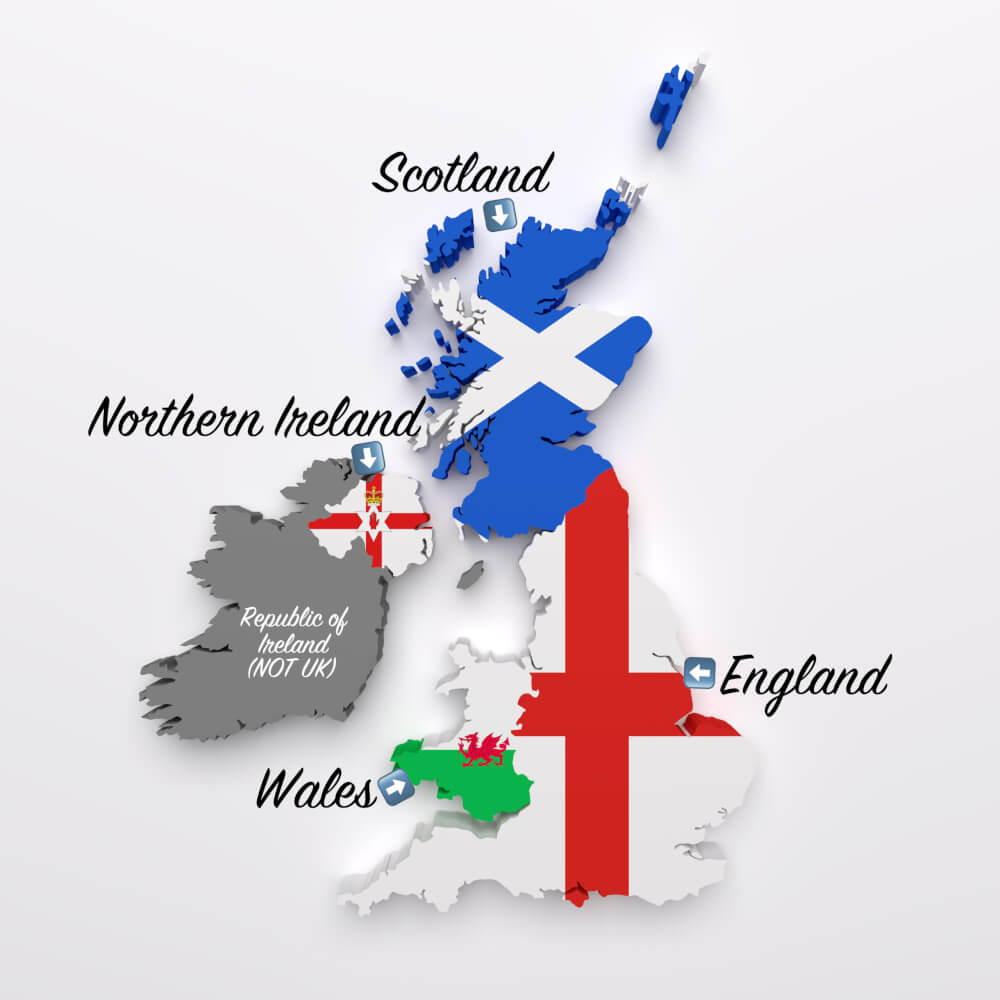
In contrast, Great Britain refers to just the island, i.e. the piece of land that includes England, Scotland and Wales. (Essentially the UK, minus Northern Ireland).
And then of course England refers to one of the constituent parts of Great Britain – the part that houses all those famous English places you’ve no doubt heard of, from South Coast towns like Bournemouth, Brighton and Poole to Northern hotspots like Liverpool and Durham Cathedral (as seen in Harry Potter).
Why am I rambling about this? Well, culturally, there’s MANY differences between the different parts of the UK, so just be mindful of that and don’t do silly things like ask English people if they wear kilts.

2. Beware the variation in accents
For my fellow period drama bingers, I have some bad news: the so-called “British accent” that we’ve collectively swooned over for years? Yeah – that doesn’t really exist.
Or, more accurately, there’s hundreds of “British accents” out there, only a small percentage of which sound like the generic sort of posh accent we’ve come to label as “THE British accent”.
In reality, people across England have wildly different accents and dialects. You can watch this video for an example of 20 different ones.
So, just be prepared for the fact that you may have difficulty understanding/keeping up, depending on where you are, and try to avoid complimenting people on their “British accent” because that term in itself doesn’t really mean anything.
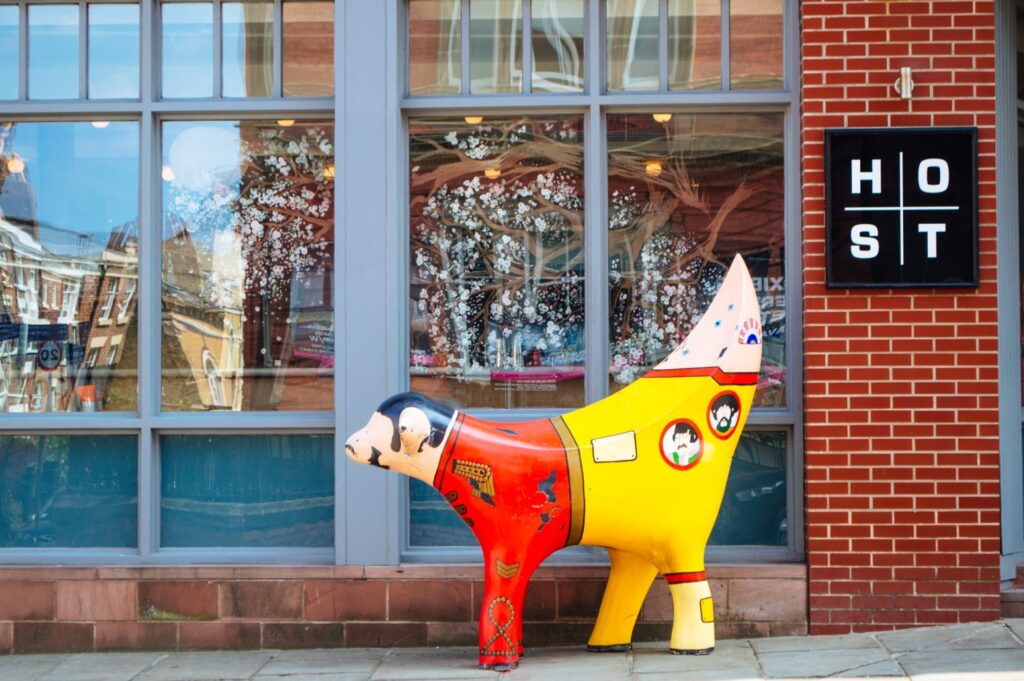
3. Understand there’s way more to England than just London
London is one of the most visited cities in the world, and in fairness, I do think it’s an absolutely incredible place to go, whether you only have three days there or more.
BUT – there’s so much more to England than just London.
I’ve already written about all my favourite places in England besides London, but just a few of my favourite favourites include…
- The South Coast, with its soft sandy beaches and dramatic coastline
- The gorgeous villages of the Cotswolds
- The hilly hikes of the Peak District
- The droolworthy scenery of the Lake District
… and the list goes on.
Luckily, England is quite compact, so you can definitely fit in a lot of destinations in one trip if you wanted to. So… want to. Please 🙂

4, Learn where to find budget-friendly stays
Now in terms of booking places to stay, there are of course a ton of options, with a wild range from backpacker hostels and cozy inns to the most opulent of castles and manor houses.
Trust me when I say in England, there’s something for every budget.
But if you’re reading this article right now, I’m assuming you’re not a Swiss billionaire with limitless ‘castle’ money, so I’m going to focus more on budget-friendly accommodation tips for England. If I’ve assumed wrong…. call me.
Now, you can check out my step by step process for booking cheap accommodation if you want a more thorough overview, but here are some quick tips for England budget accommodation.
Firstly, one very cheap hotel chain to look out for is Premier Inn. They have locations all around the UK and tend to be some of the more reliable budget-friendly options, and they famously don’t make themselves available on 3rd party sites so be sure to check them directly for availability.
Another option if you’re on a budget is pubs! A lot of first time visitors are surprised to see that you can stay in pubs, but many pubs actually have a few rooms they rent out upstairs or on the property so don’t be afraid of trying those out on your trip.
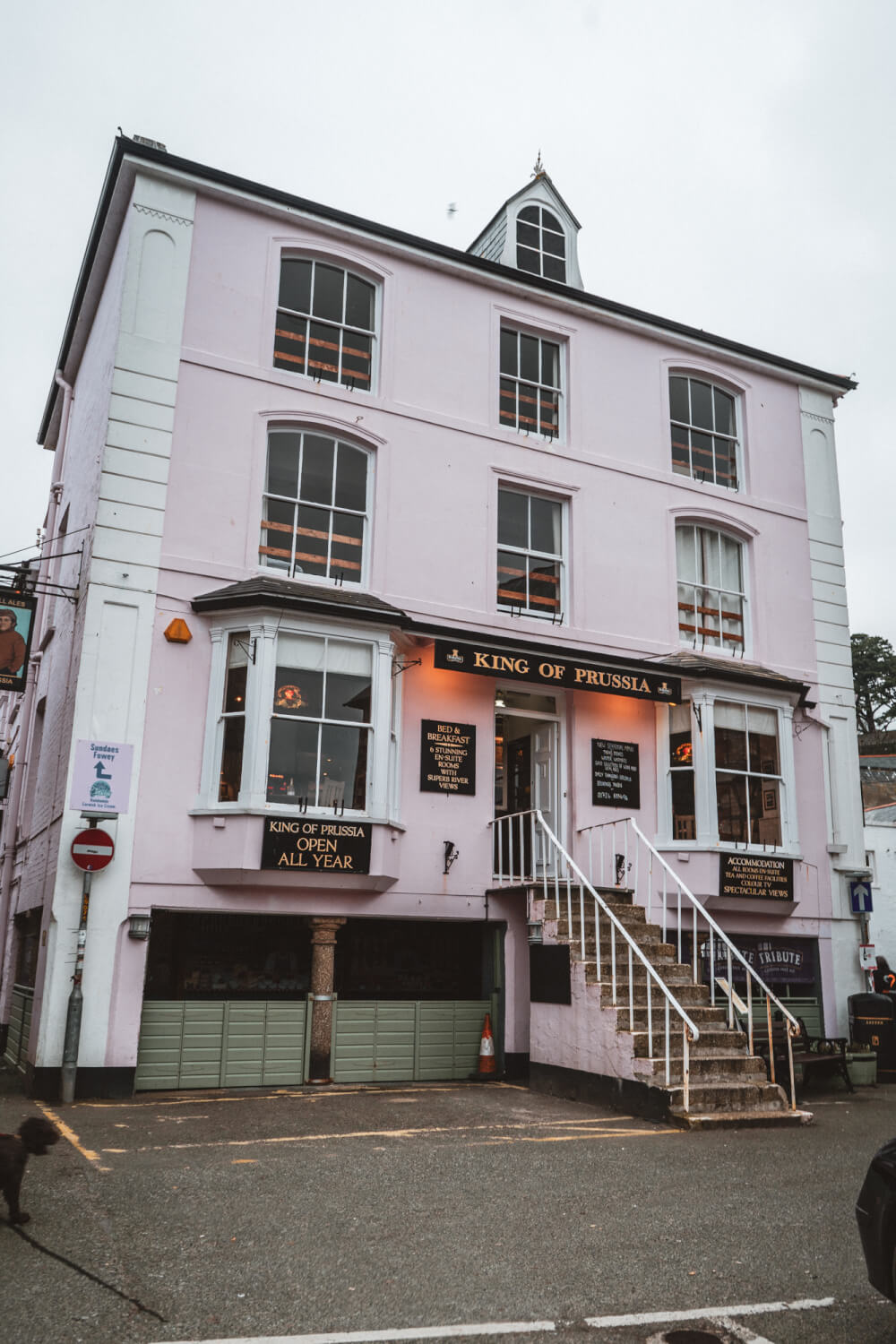
5. Before you leave, make sure you have a good credit card
Remember that old adage “cash is king?”
Sadly, in England, that throne has been usurped by contactless card payments.
Over the past few years, I’ve found that there are increasingly places that do not accept cash, so if you don’t have a good credit card with minimal fees, get one.
I highly recommend Wise for that purpose. They offer a free card that allows you to “send and spend money around the world at the real exchange rate”, avoiding hidden fees in the process, plus two free ATM withdrawals per month overseas.
You can use my referral link here to transfer your first $500 fee-free.
NOTE: I’ve also had a good experience with Revolut when I lived in Germany, but they don’t offer services for Canadians so I can no longer use them.
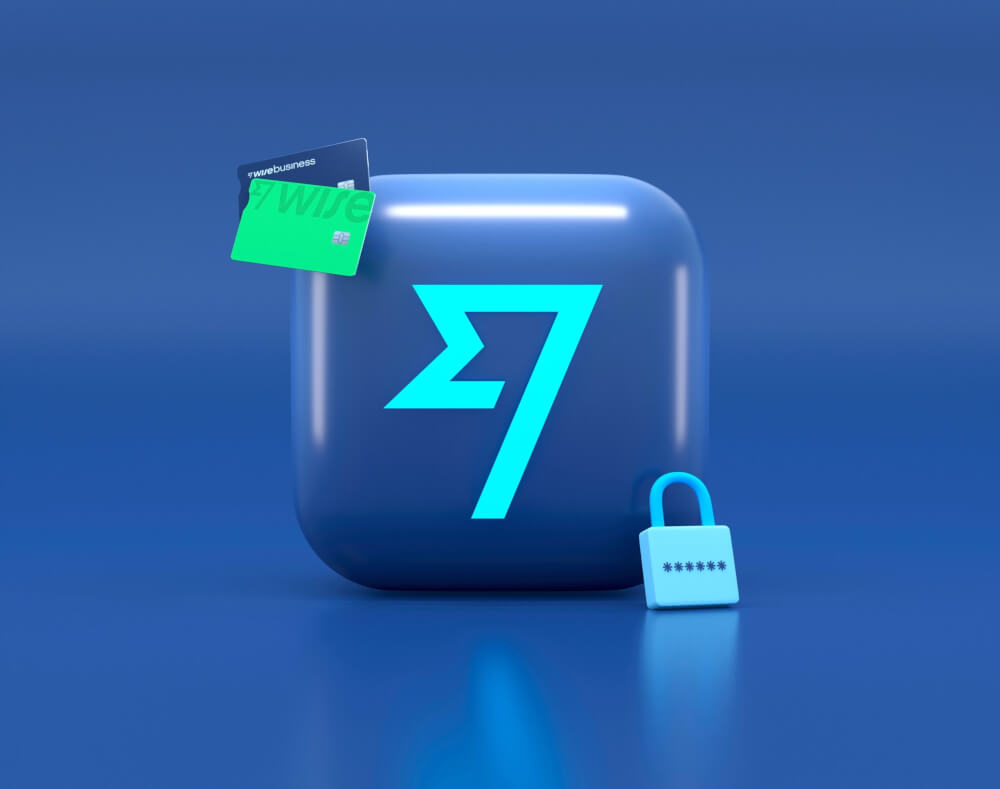
6. Be careful crossing the street
Here’s a very unique and unheard of England travel tip: don’t get run over.
No. Seriously. Be careful.
The prospect of ‘left side driving’ might seem quirky and fun if you’re not used to it, but the oft forgotten consequence for pedestrians is that cars will be coming from a different direction than you’re used to, so your natural instincts when crossing the street will be thrown off.
So, be sure to properly check both directions before crossing.
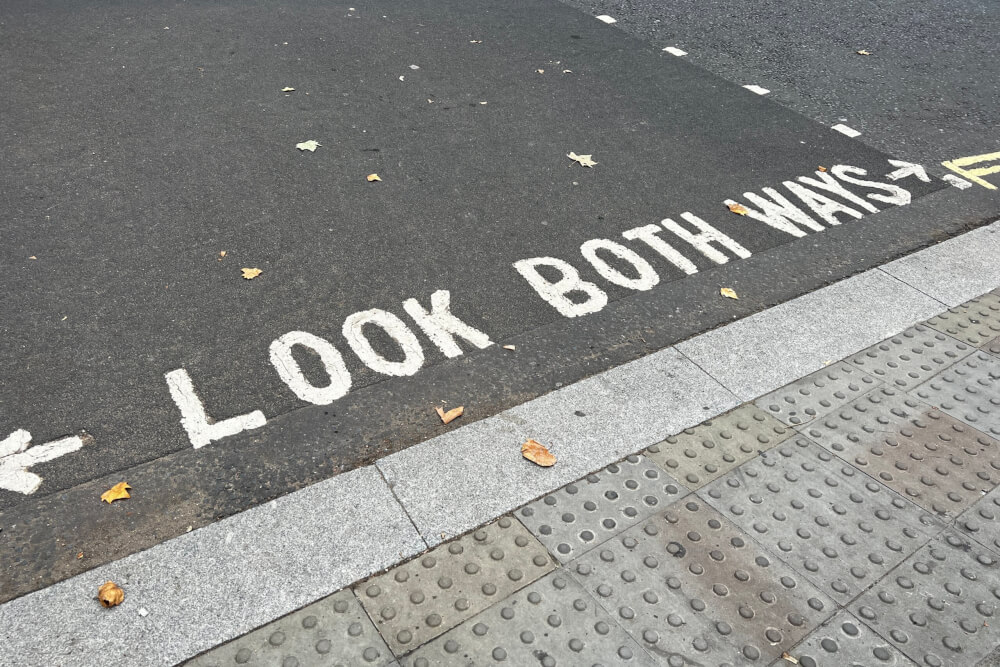
7. Prepare for some common vocabulary differences
It’s no secret that North American English and UK English can differ a lot, not just in terms of accents but also in the words we use.
So here are some basic must-knows that you might encounter:
- the loo or the toilet = washroom or bathroom
- lift = elevator
- boot (of a car) = trunk
- queue = line-up
- pavement = sidewalk
- petrol = gas
- football = soccer
- quid = pound/unit of currency (e.g. 5 quid = 5 pounds)
Now oftentimes especially in more touristy areas, they’ll still understand if you use the wrong word, but quite often they won’t… And you may get publicly mocked by a pub employee for asking where the washroom is (sad true story).
… So yes, adapt to British English wherever possible. It’ll make your life much easier (and less embarrassing).
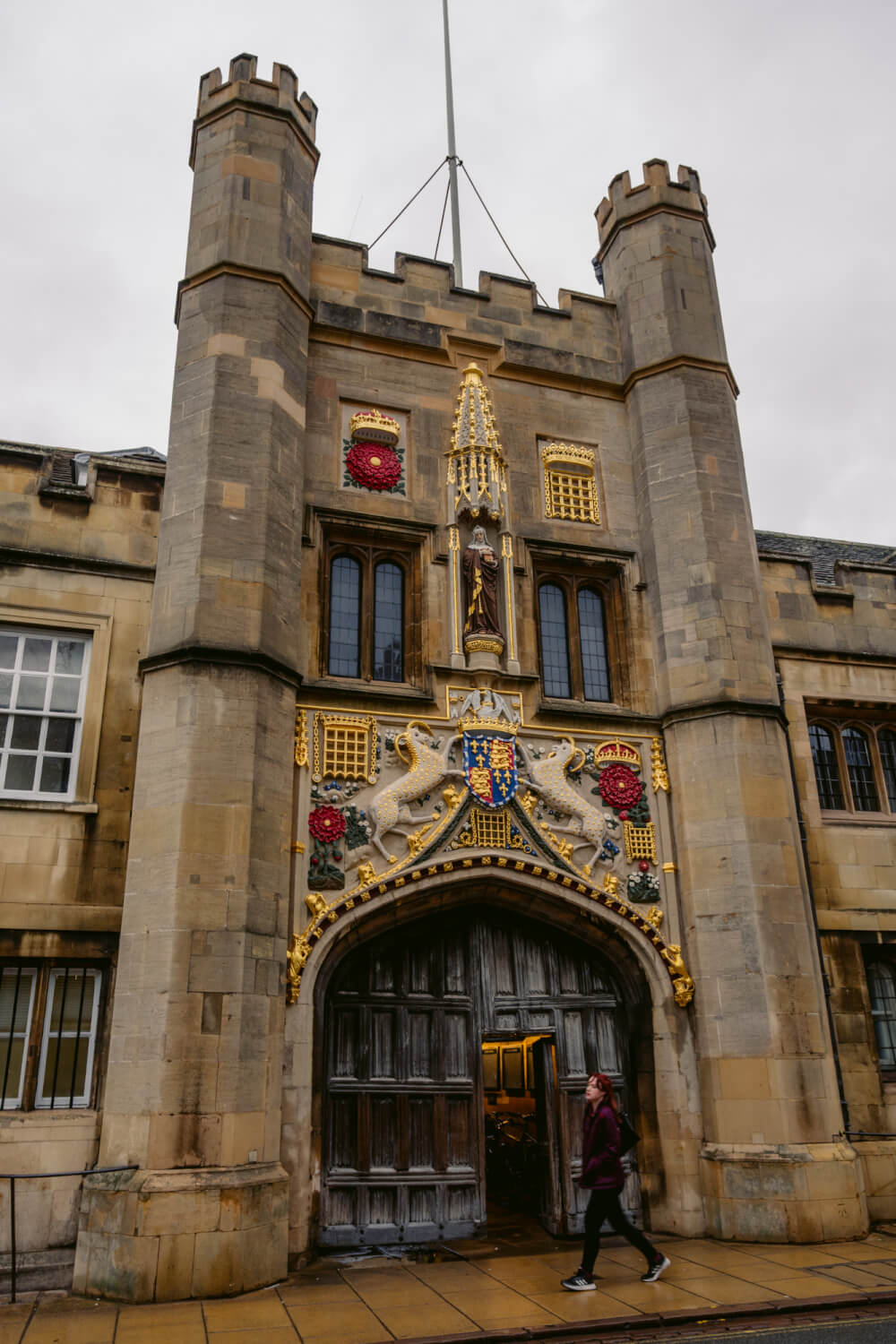
8. Know that “You alright? You okay?” is a greeting
Upon your first trip to England, you may discover that people are suddenly very concerned with your well-being.
Choruses of “Are you okay?” and “Are you alright?” are sure to feature prominently in your day to day.
Well, here’s some good news: they don’t think you’re in danger. They’re genuinely just saying hi. These phrases are common greetings, and don’t ask me how long it took me to realize this.
Think of it as a British “hey what’s up?”
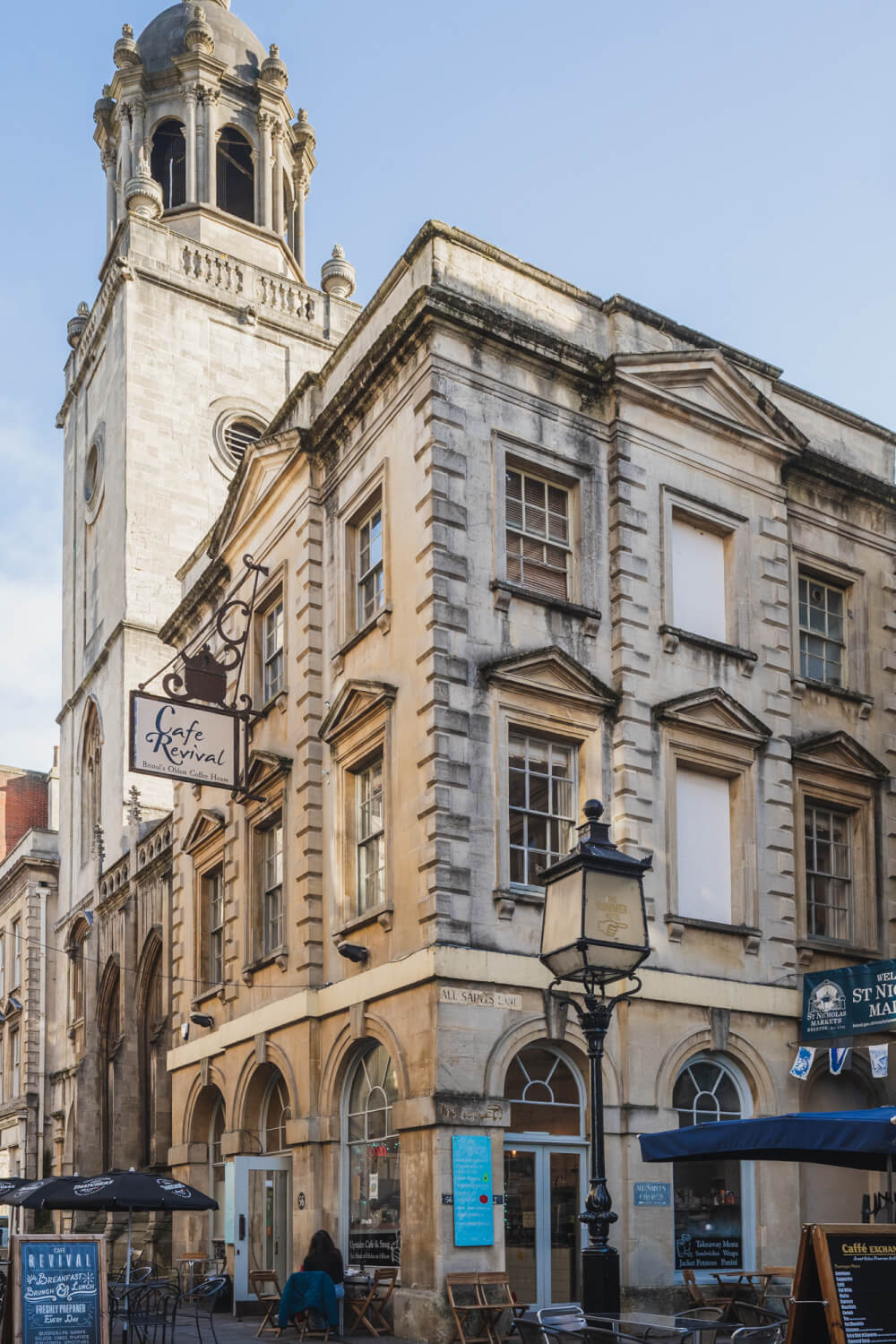
9. Beware that many names aren’t pronounced how they look
British English is a trap. There – I said it.
Often first-time visitors are embarrassed to discover they’ve been saying famous place names wrong, and (in meaner cases) are even mocked for it once they arrive.
But it’s not you! It’s the letters! They’re confusing. And yes, I intend to start a “British place name confusion” support group soon.
But to prioritize more… preventive measures, here are some common traps for you to keep in mind so you don’t sound silly and can properly ask for directions:
If there’s a place name that ends in -ham, the H is almost always silent, and it’s more like an mm sound, rather than Ham (like the cured pork). Similarly, “-heim” is usually an mmm sound as well, like in Blenheim Palace.
If there’s a place name that ends in -shire, it’s usually not pronounced shy-er (like the Shire in Lord of the Rings), it’s shurr. A lot of counties will end like this, like Hampshire. Not Hampshire.
If you see a W in the middle of the place name, often it’s silent. So, Norwich is Nor-itch, not Nor-witch. Similarly, Greenwich is Gren-itch, not Green Witch.
If a place name ends in -mouth, it’s almost never mouth (like the thing you stuff food in), it’s usually pronounced myth, so Bournemouth is not Born-mouth, it’s Born-myth.
Lastly, one of the trickiest ones, if you ever see a name ending with -cester, very rarely is it pronounced like that. It’s almost always something shorter, like Bicester is “Bister”, Leicester is “Less-ter”, not Lay-sess-ter and Worcester is “Wuster”.
PS: As a bonus, London’s famous River Thames is pronounced “Tems”, not “thay-ms”.
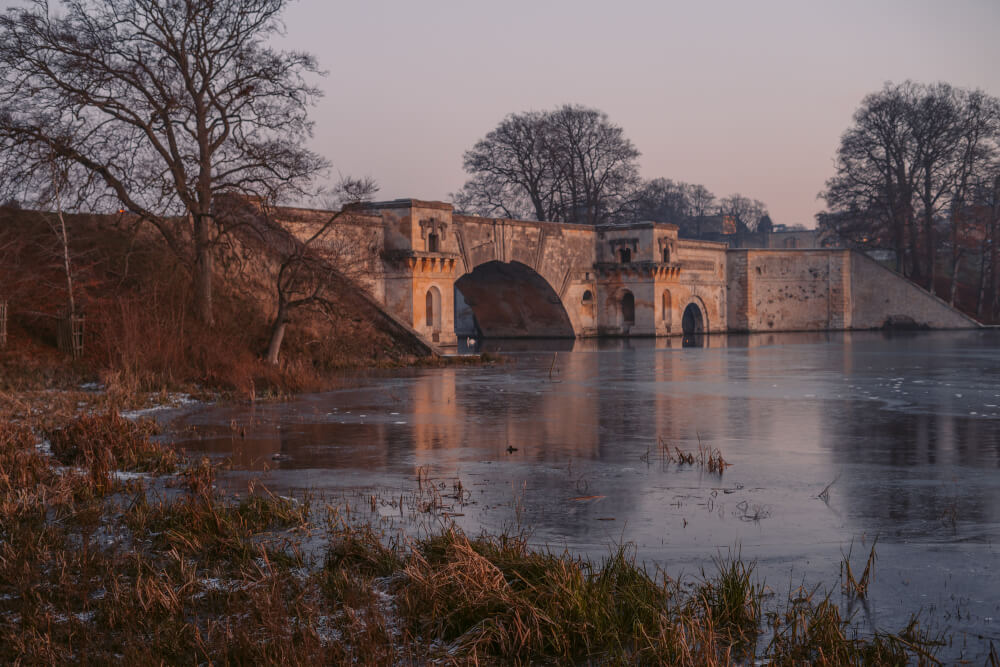
10. Respect England’s queuing culture
Another important cultural etiquette must-know is to abide by England’s queuing culture.
Queuing or lining up is essential in England, so make sure you don’t accidentally cut queues or budge. That’s the easiest way to instantly anger an English person (that and making tea in a microwave, I guess).

11. And stand on the right side of escalators
Another great way to make English people angry? Blocking their way on the escalator.
Remember: in England, the right side of escalators is for standing, while the left side is reserved for people who are walking.
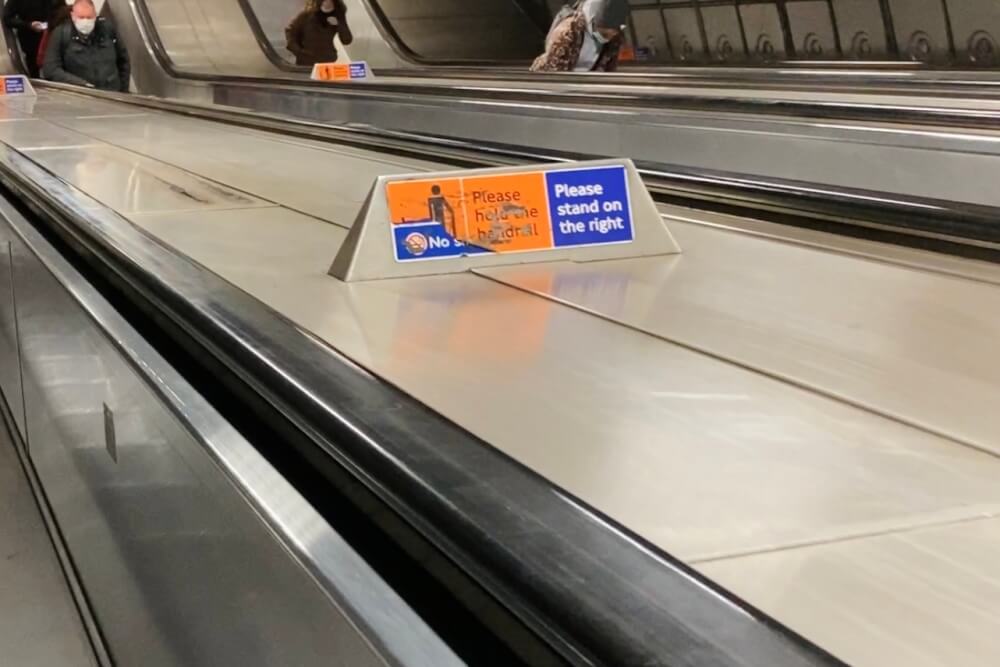
12. Avoid public transport during rush hours… and during big events like sports games
When you’re a tourist, you have the luxury of flexibility so don’t try to cram into public transport with all the locals during their commute to/from work. It really is the worst.
… Especially if you get stuck on transport while there’s a big football game on. Oof – I can smell it now.
As an added bonus, peak vs. offpeak pricing for transport is quite common, so you’ll actually save money if you choose to travel during offpeak periods (usually early in the morning, in the afternoon, or later at night – basically whenever people aren’t trying to get to/from work).

13. Prepare yourself for scaffolding and restorations
England’s lengthy history is responsible for a lot of things: fascinating ruins, majestic palaces, museums aplenty and… a booming scaffolding industry.
Yes, sadly the downside of England’s old age is that many of its monuments are regularly undergoing restoration work, which involves unsightly scaffolding in the best of cases, and complete coverage in the worst of cases.
For instance, here’s what London’s famous ‘Big Ben’ looked like for a few years:
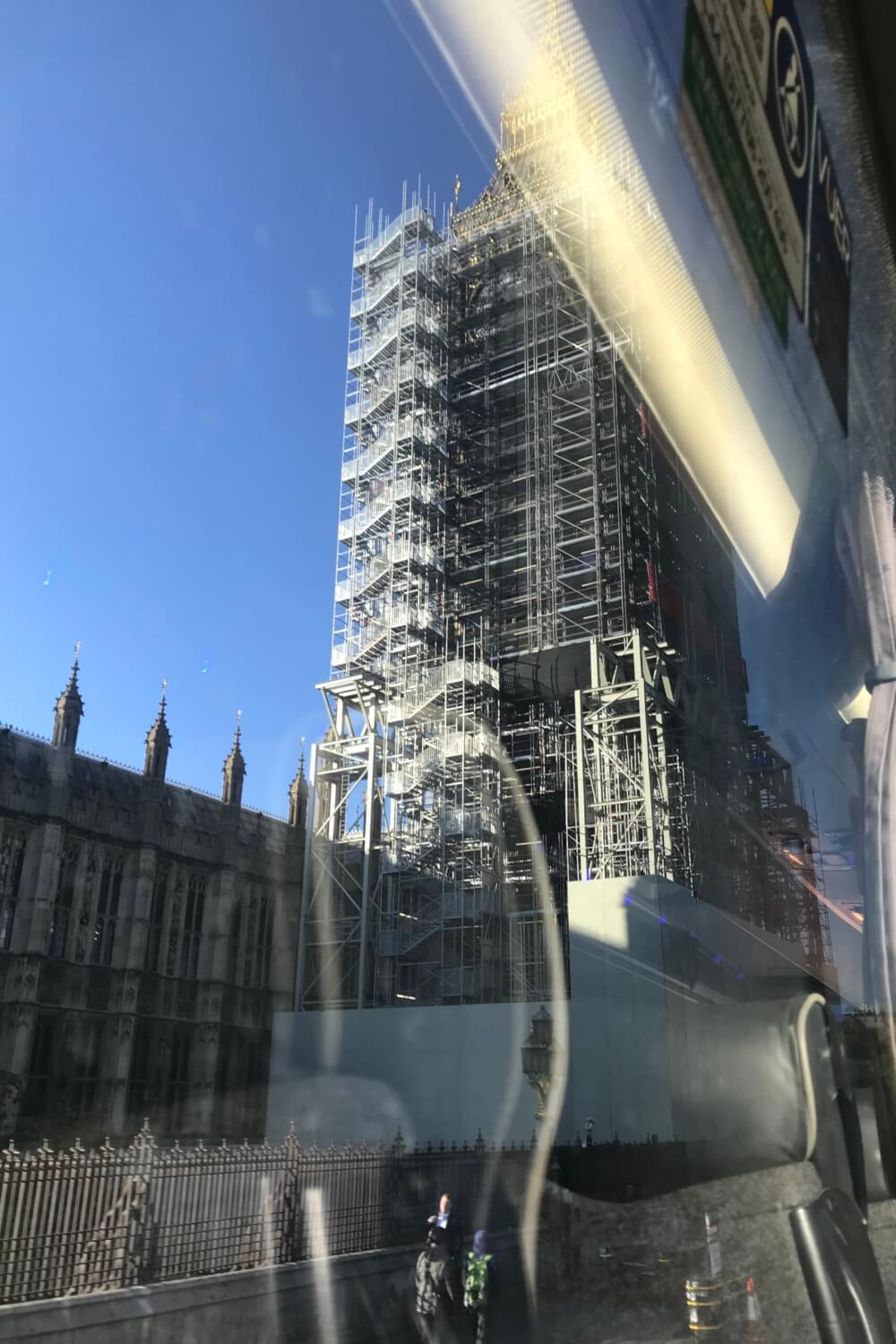
And here’s what the majestic Manchester Town Hall looked like on my recent visit:
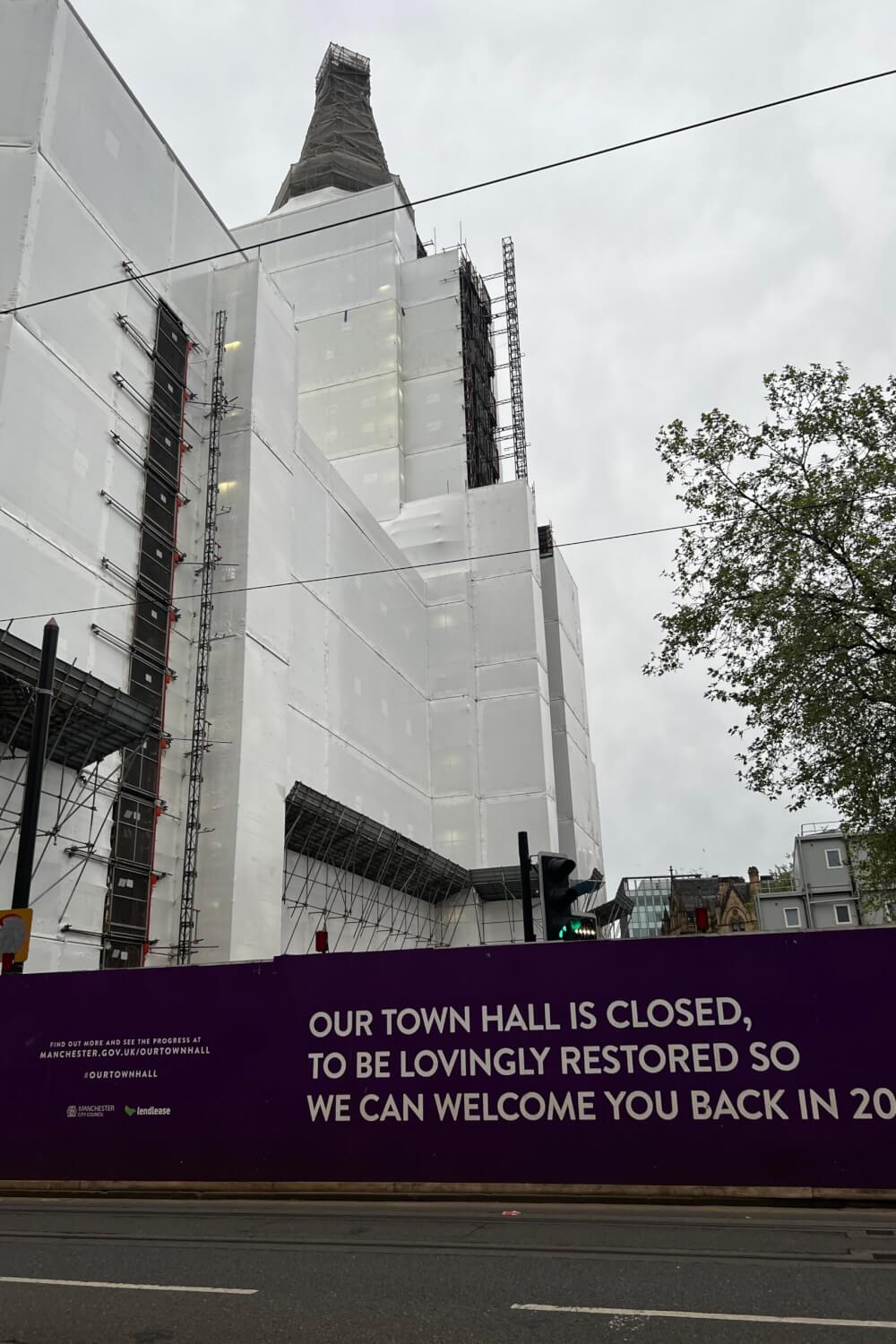
Of course, there’s not much that can be done about this (unless you’re that aforementioned Swiss billionaire) but it’s good to keep in mind just so you can temper your expectations a little bit.

14. Keep your phone out of easy reach at all times
I’ve previously written all about how to avoid pickpockets in Europe, and while pickpocketing does happen in England, the more prevalent threat these days in big cities is actually phone snatching.
… and if you’re like me and consider your phone the closest thing you have to a child, then you’ll want to take special care and attention to ensure it doesn’t get phone-napped while you’re out exploring.
This means not having your phone out in easily grabbable situations (e.g. texting next to a bike lane, where someone could just take it) or leaving it out in easily grabbable places (e.g. on a terrace table).
Avoid having your phone out unless you absolutely need it, and your baby will be fine.

15. Give English food a chance
Thanks to revolting-sounding foods like “beans on toast” and that “spotted dick pudding” I mentioned earlier, English food has suffered some pretty bad bullying over the years.
But don’t listen to the haters – English food can actually be super delicious, especially if you’re into hearty comfort food (usually) slathered in a biblical flood of gravy.
So if you’re looking for England food tips/recommendations, here are my non-negotiable must-tries:
- Full English Breakfast
- Sunday Roast / Roast Dinner
- Fish and Chips (preferably by the sea)
- (Savoury) Pie
- Sausage Rolls
- Bangers and Mash
- Pasty
- Sticky Toffee Pudding
- Shepherd’s Pie/Cottage pie
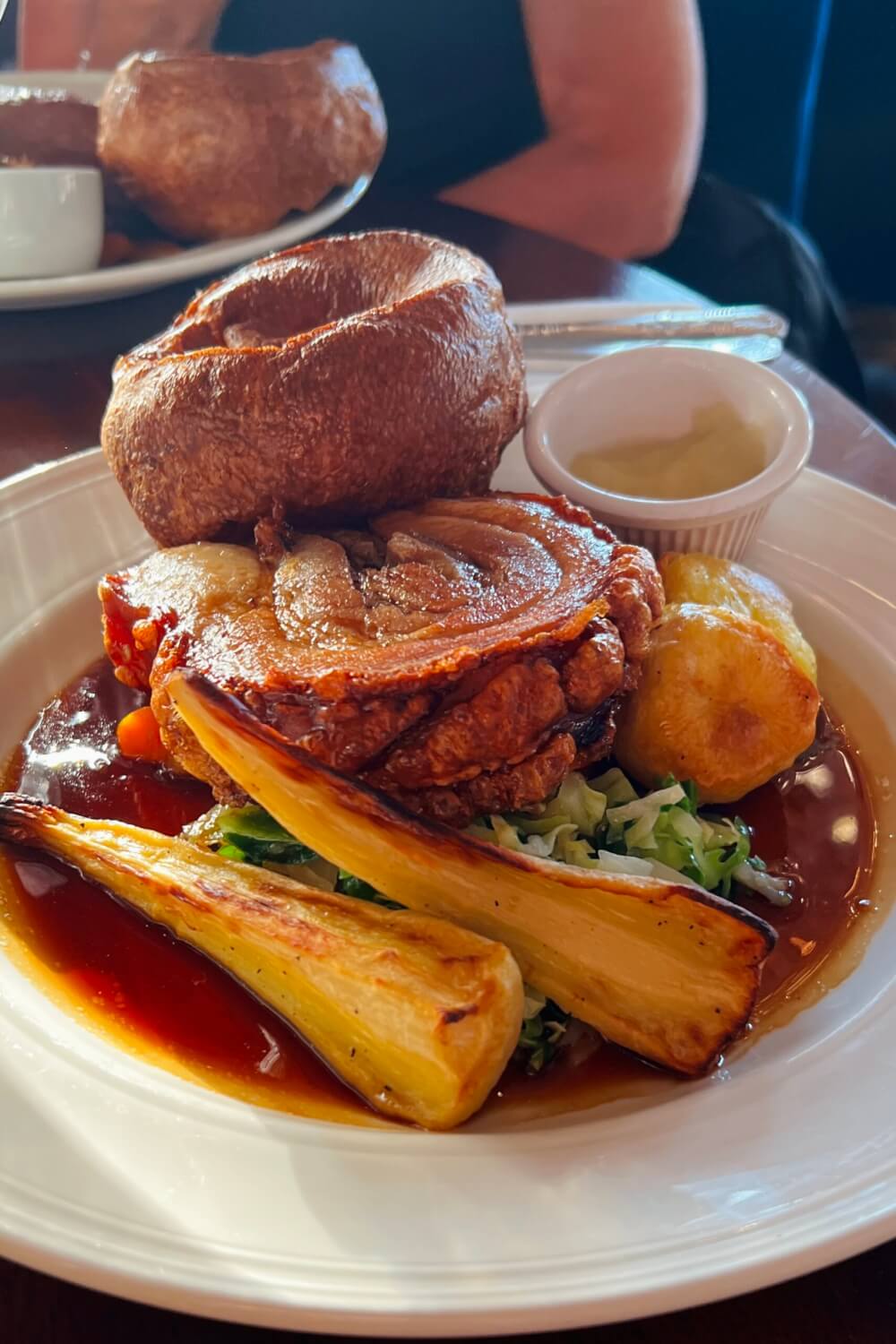
16. And give International cuisines a try too
As we all know, the British Empire once covered a quarter of the world’s population.
The history there is dark but one (more positive) consequence has been that England is home to some amazing food from around the world, especially in big cities like London and Manchester.
So, don’t feel like you need to stick to solely English food.
Overwhelmed? Indian food in England is an especially popular choice, but you can always try to find a food market or hall (of which there are many in the big cities) and sample a bunch of cuisines at once.
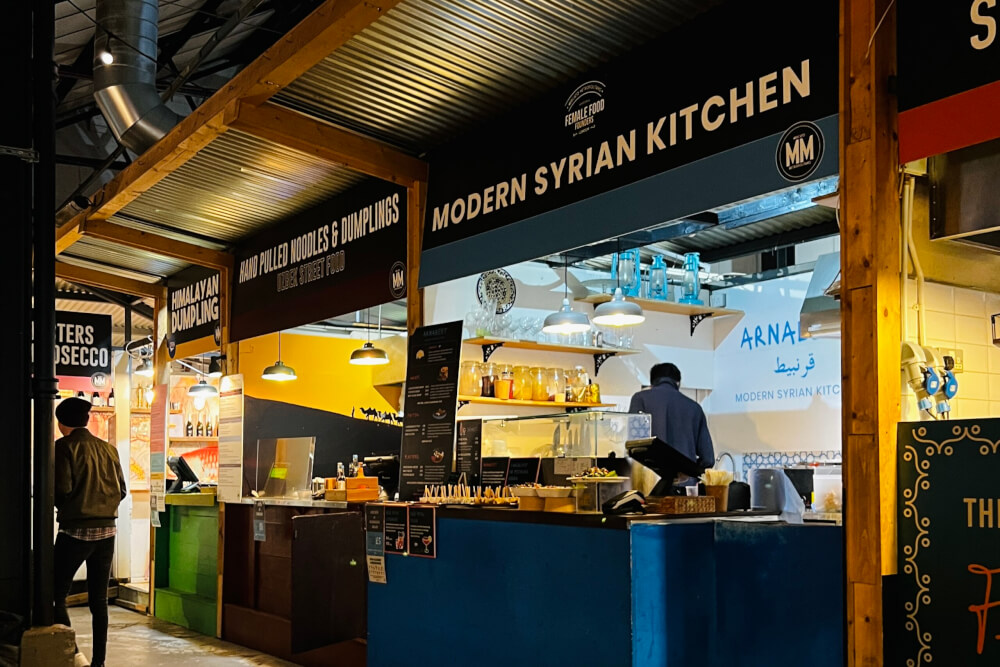
17. Beware of the many meanings of “pudding”
In North America, pudding refers to a creamy type of dessert, usually served in a little cup, which acts as a beacon of nostalgia and deliciousness for kids across the continent.
In England, the word pudding has a different meaning. Multiple different meanings, actually.
In fact, I might argue it’s one of the more confusing words in British English, but allow me to illustrate my point with a few examples:
- Generally, pudding is a word that means dessert, so if someone asks if you want pudding, they’re asking if you want dessert, to which I hope you answer “absolutely”
- Yorkshire pudding however refers to a deep fried dough thing that’s served with roast dinners – it’s literally pancake mix prepared differently, but it’s SO good with gravy
- Black pudding is a blood sausage sometimes served with a Full English breakfast
- There’s also bread pudding which is basically stale bread with eggs and milk, but… also good
In summary, pudding has a lot of different meanings depending on the context, so don’t be too thrown off by this.
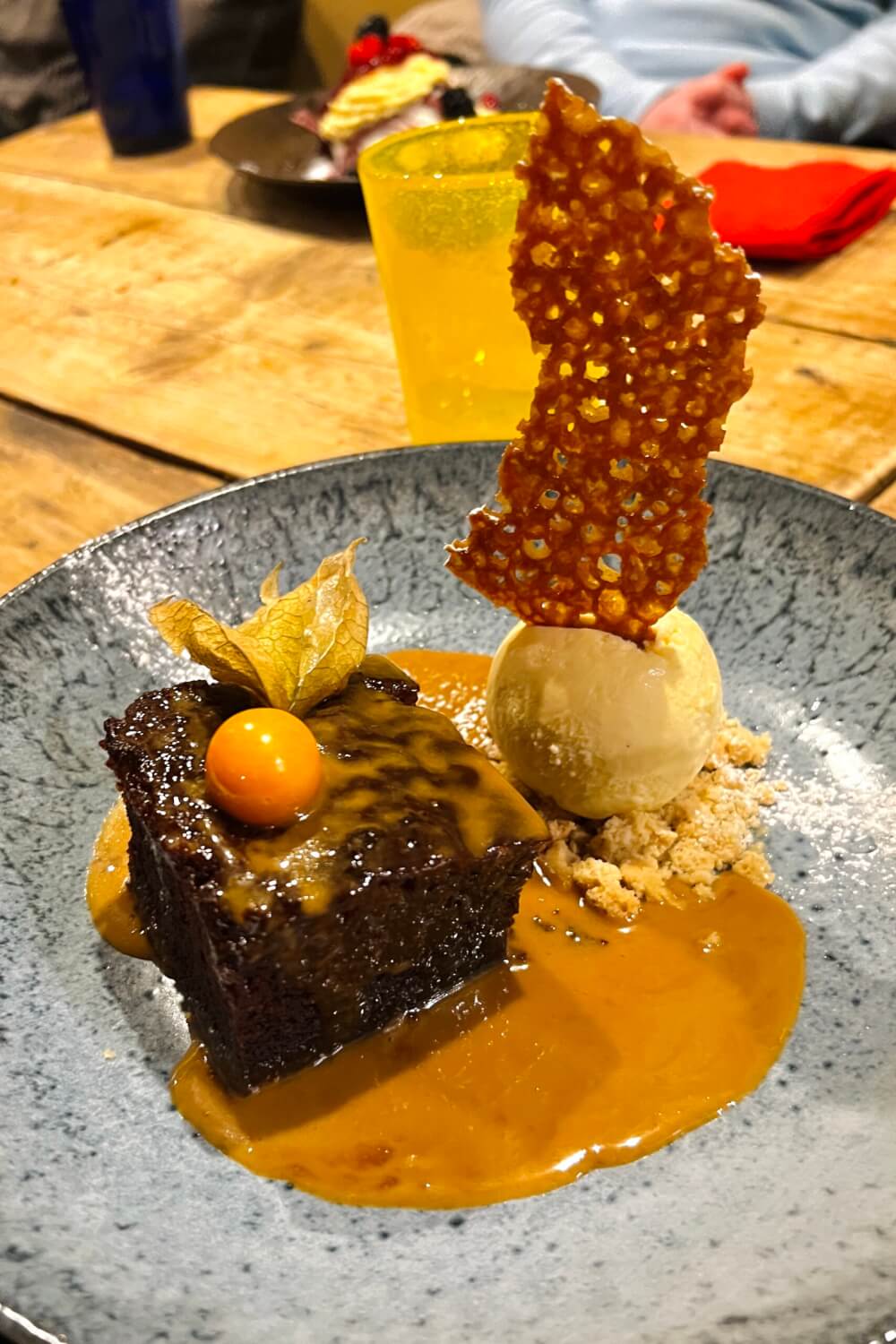
18. Know where to find cheap eats
Now, while the choices are endless and enticing, the truth is it can be kind of pricey to dine out in England…
Fret not however, there’s a few easy ways to save.
First off – Meal Deals are a lifesaver. A lot of big chain places in England do them – you basically get a main, a snack, and a drink for a set small price like 4 or 5 pounds. And it’s a great way to fill up quickly and on a budget!
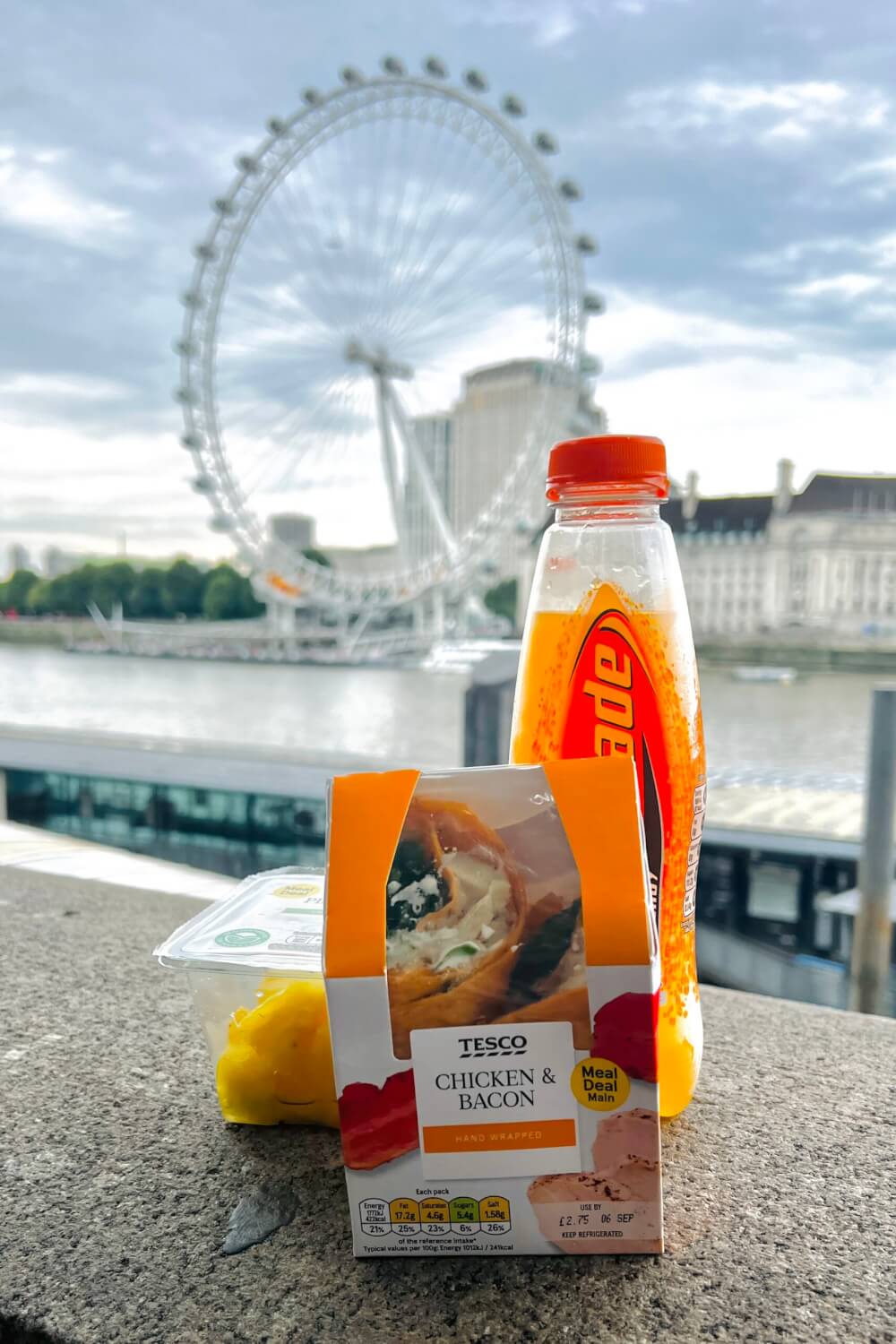
Another place to get cheap snacks is bakeries or chains like Greggs, where you can get pastries and sausage rolls for less than 2 pound each.
For a “nice” sit-down meal with drinks, look into lunch specials or early dinner specials. Many places in England offer special deals if you dine early, which works out well for North American visitors because our meal times tend to be a bit earlier than England’s anyway.

Lastly, if you’re looking for a VERY cheap sit-down meal with drinks, there’s a chain of pubs across the UK known as Wetherspoon, or Spoons.
It’s a bit controversial for a lot of reasons I won’t get into, but there’s literally almost 900 of them across the UK and they’re super popular because their prices are astoundingly cheap for both food and drink.
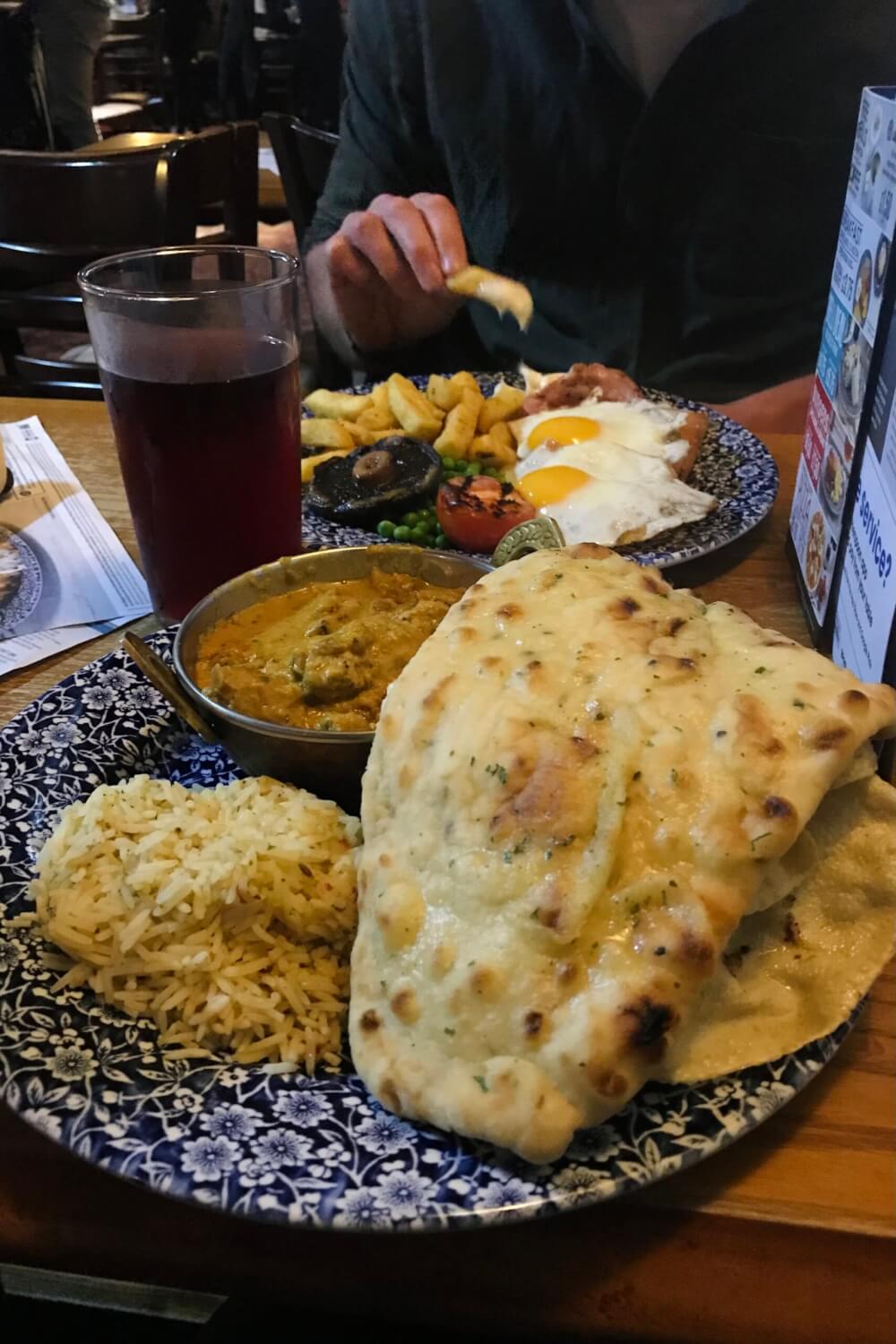
19. Learn how to tip in England
In terms of tipping, tipping culture isn’t as big in England as in North America. People tend to only tip for good service and it’s typically around 10%.
When ordering at the bar, it’s not even the norm to tip at all (although a bit in a tip jar would always be appreciating).
It’s worth noting however that these days, a lot of restaurants are starting to add something called a Discretionary Service Charge of 10-12.5%. You will see this added to your bill, and they will assume you’re paying it unless you say otherwise.
If however you don’t want to pay the charge (and you lack my social awkwardness/anxiety) you can simply say so and they will remove it.

20. When visiting pubs, it’s common to order at the bar
If you come from a non-pubby culture like mine, this may be new information to you: in England, it’s very common to order up at the bar (meaning where the beer taps, etc. are) rather than wait for table service.
This goes for both drinks and food (if the pub you’re visiting offers it).
Usually this ensures quicker service because you get your drinks instantly, and you don’t need to wait for a server to come along.
… This also means that you don’t need a table to be served drinks, which is why it’s quite common to see people sipping pints out on the street during busy periods.
NOTE: If you plan to order food at the bar, take note of your table number so that you can give it to them when they ask.
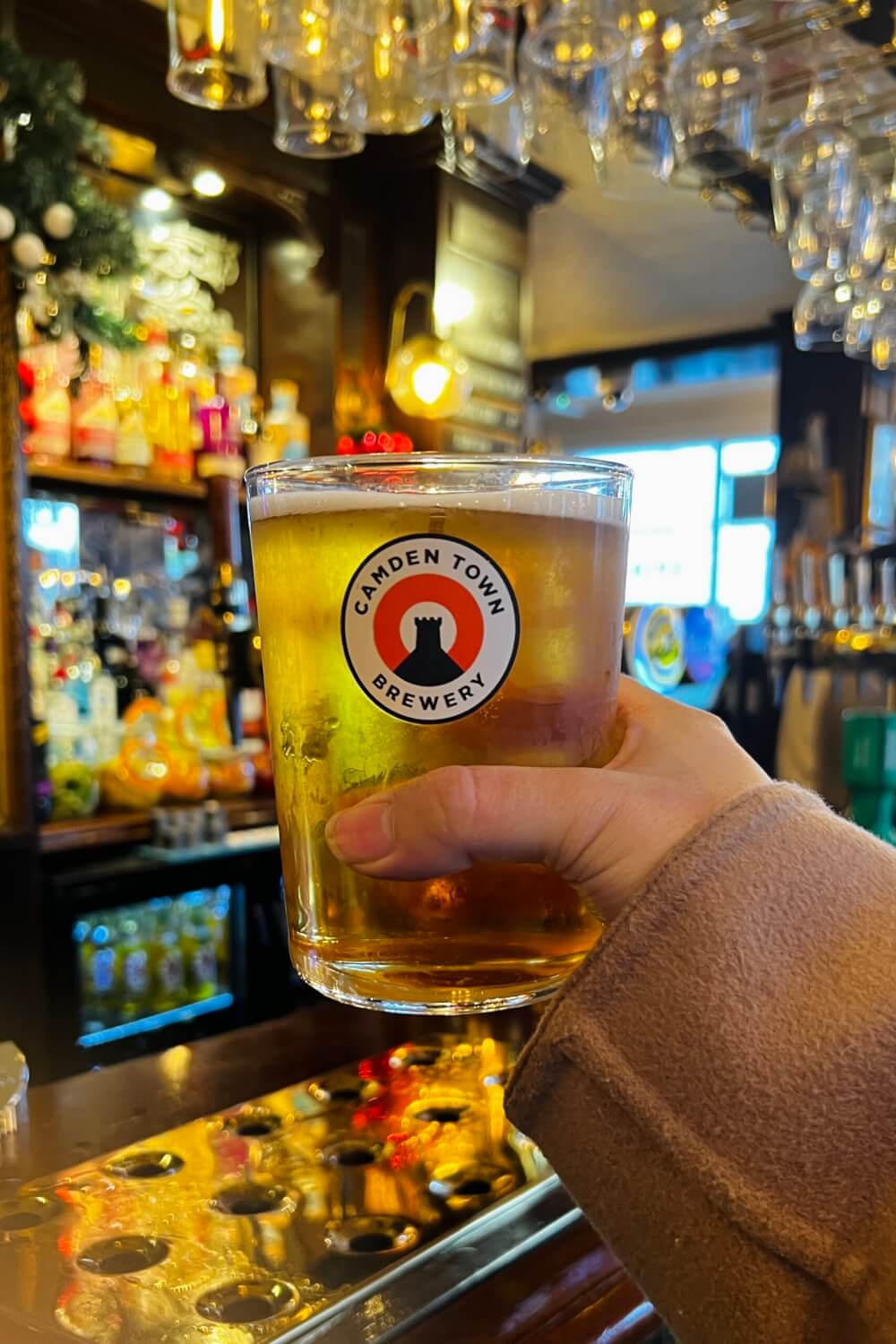
21. Avoid renting a car unless you’re going to small villages or nature spots
Alright, now let’s talk about some transport tips for England, and how to get around.
To start, I would say for (most) first-time visitors, it doesn’t make sense to rent a car.
Not only is driving on the left side of the road going to be a challenge for a lot of newbies, it can also be quite pricey and you’ll find that most big cities and towns are well serviced by public transport.
That said, there’s of course a few exceptions. If your itinerary includes a lot of smaller villages or nature spots, then renting a car is probably the best way to see those more remote parts of England… but generally speaking, if you’re just visiting big cities, you won’t need a car rental.
Still considering it? Here is a post to help you figure out how much renting a car in Europe really costs.
NOTE: Renting a car isn’t the only way to see more remote places in England! There are many companies that offer day tours from larger towns/cities so you can enjoy all the scenery without worrying about endangering the British public with your left side driving.

22. Know the difference between individual train companies and “National Rail”
Another common way to get around England is by train.
If you’re unfamiliar with taking trains, you should probably read my step by step guide to train travel in Europe, because it’s actually not that intuitive.
But with the UK, there are some additional confusing things for first time visitors, so I’ll go through them now.
Overall, what you need to know is there are about two dozen different companies offering rail service in the UK, all with their own names (e.g. Southwestern Rail, Avanti West Coast, etc.
However, the term you’ll encounter more often is “National Rail”, which is an umbrella term mainly used for branding and consistency that includes many different train companies.
So, just know that there is no such thing as “National Rail” branded trains – when you are booking tickets or boarding your train, you’ll want to look for the specific company you’ve booked with.
23. Use Trainline to easily look up trains
Of course, you can use the National Rail website to search up trains OR one app I prefer is Trainline.
I love using them to search and book so I can have all my bookings in one place, plus they do other handy things like remind me when I’m entitled to compensation for delayed trains (more on this later), send me notifications when my platform is announced, and more.
NOTE: They do take a small service fee so you can book directly with the specific train company if you want, but I don’t mind paying a bit extra for the convenience.

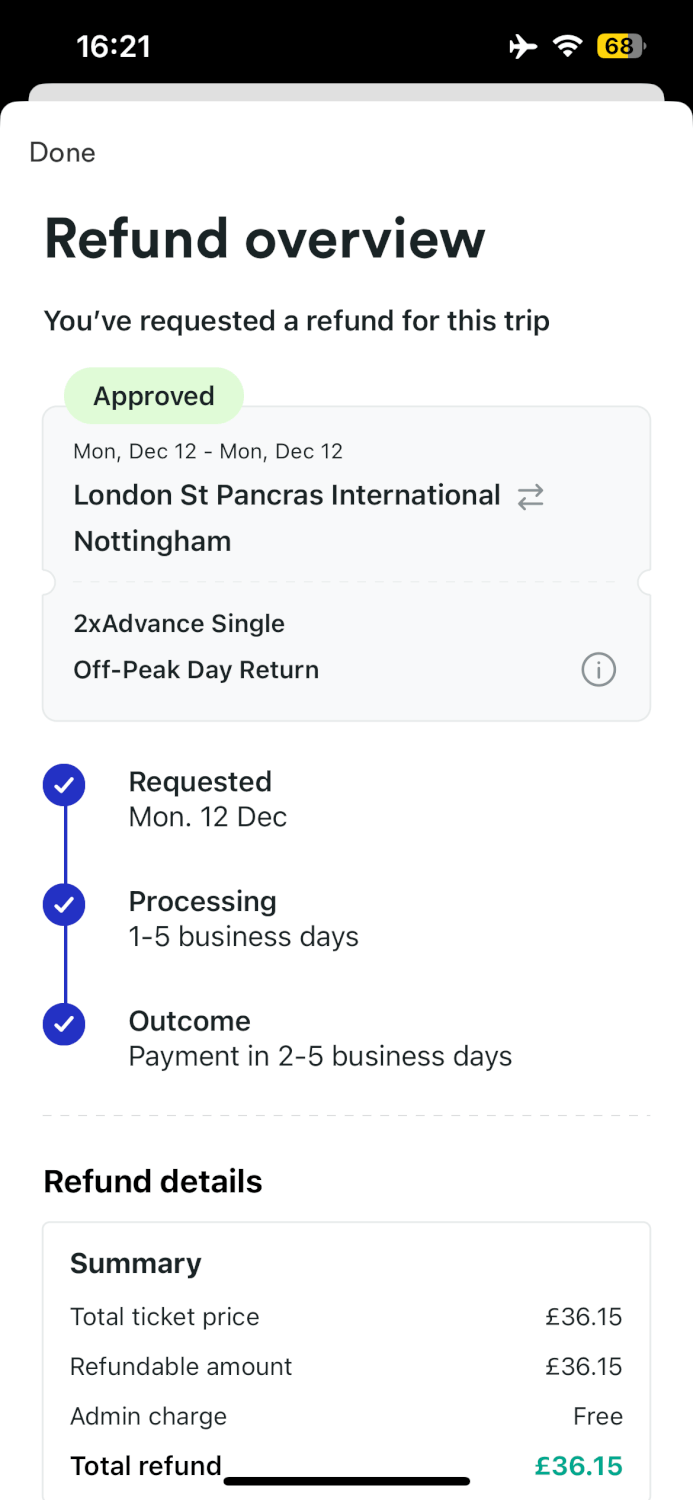
Another alternative for finding split tickets is TrainPal. Their main selling point is they don't charge a booking fee and they also track the carbon emissions from your trip and allow you to participate in tree planting projects within their app.
Use the code HAPPYTOWANDER for 33% off Railcards & 5% off for EUR/UK rail tickets for new customers and 2% off for existing customers.
24. Buy rail tickets in advance to save big
Now, a huge shock for first time visitors is how expensive train travel can be in the UK.
Yes, especially if you wait last minute for the longer distance trains, the prices are… eye-watering.
BUT, if you plan in advance, actually the prices can be decently reasonable. Trains never get cheaper closer to the travel date, so the sooner you book the better.
There are of course some other tricks as well that you can use to save money on trains, which I’ll explain below.

25. Look into buying a RailCard
If you’re between the ages of 16-30 years old or aged 60 and over, one way to save money on train tickets in England is buying something called a RailCard.
This might only make sense if you plan to take the train a lot, but basically it’s a card that you buy for a set price that then gives you 1/3 off rail fares for the year.
If you’re visiting London, you can also link a RailCard to your Oyster card and save 1/3 on public transport journeys in the city as well.
Because trains in the UK can be so pricey, often you can get the value of the RailCard back within one or two journeys, so it can definitely be a huge money saver!
If you plan to travel by train a lot in the UK, consider buying a RailCard that will save you 1/3 off all fares. This is the ultimate money saving hack if you travel often enough, and it can even be linked to an Oyster Card to be used for London Tube journeys!
Buy through TrainPal and you can use the discount code HAPPYTOWANDER to save 33% off your RailCard!

26. Consider getting a BritRail Pass
Another potential way to save on the train is getting something called a BritRail pass. With it, you can get unlimited train journeys for a set period, whether that’s a consecutive few days or a set of days within a certain time period.
This is a great option if you need a bit more flexibility and don’t want to buy tickets in advance. It’s also great if you plan to do a lot of day trips.
There’s a few BritRail passes but in my opinion the best value is the London Plus pass, which includes London and pretty much every popular London day trip destination.
Of course, it’s honestly probably cheaper to just book train tickets early to secure the best deals, but if that’s no an option or you want to be flexible, BritRail passes are great for that.

27. Claim compensation for late trains
Now, while I acknowledge I have a (frankly, unhinged) obsession with train travel, I can see its flaws too, and I must admit that trains in England can often be delayed or worse, cancelled with little notice.
BUT before you all start sipping tea angrily, there is a silver lining. As I mentioned above, it’s actually VERY easy to claim compensation if your train is delayed.
A lot of train companies have this thing called Delay Repay and you can file claims and get refunds online if your train is as little as 15 minutes delayed. Often if it’s over an hour delay, you get a full refund.
Again, this varies depending on the train company, but I’ve filed claims on Southwestern Railway, Southeastern Railway, Chiltern Railways, and Northern, all of which were super easy.
… So keep that in mind the next time you’re confronted with this dreaded notice:
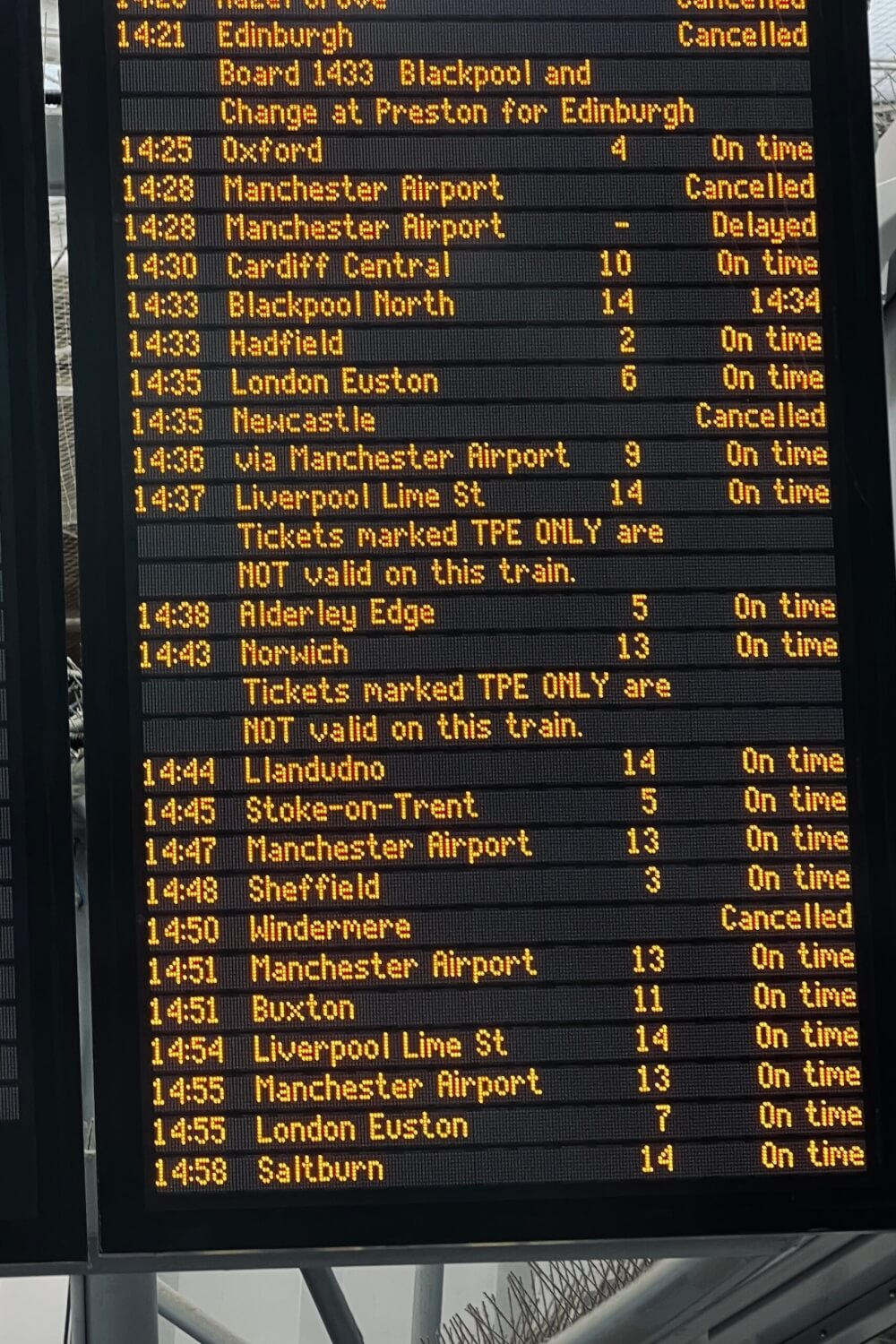
28. Look into bus travel (AKA coach travel) if you’re on a budget
Besides trains, another common way to travel around England is by bus, or as they call them in England, by coach.
These are usually much more affordable than trains, and super common as well, with plenty of coverage across the country.
Here are some of the main companies to look into:
- Megabus
- National Express
I would personally search up your route on Omio, which shows you different options, and then from there you can assess what the best choice would be.
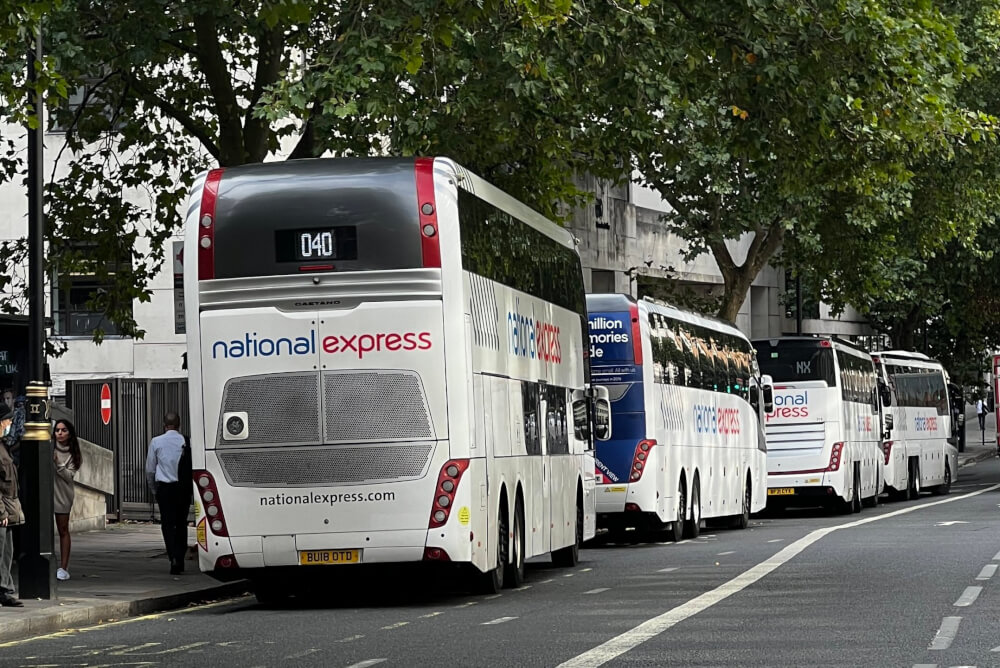
29. Always hold onto your tickets
Whether you’re travelling by longer distance train or just catching a quick trip on the London underground, make sure to always have your ticket handy.
At bigger train stations, there are fare gates so you’ll have to scan your ticket on the way out, and the same applies for underground trains like the tube in London – you have to tap out in order to leave.
There can also often be ticket controls on board (even after you’ve tapped in or scanned your ticket), so don’t throw your tickets away or accidentally misplace them!
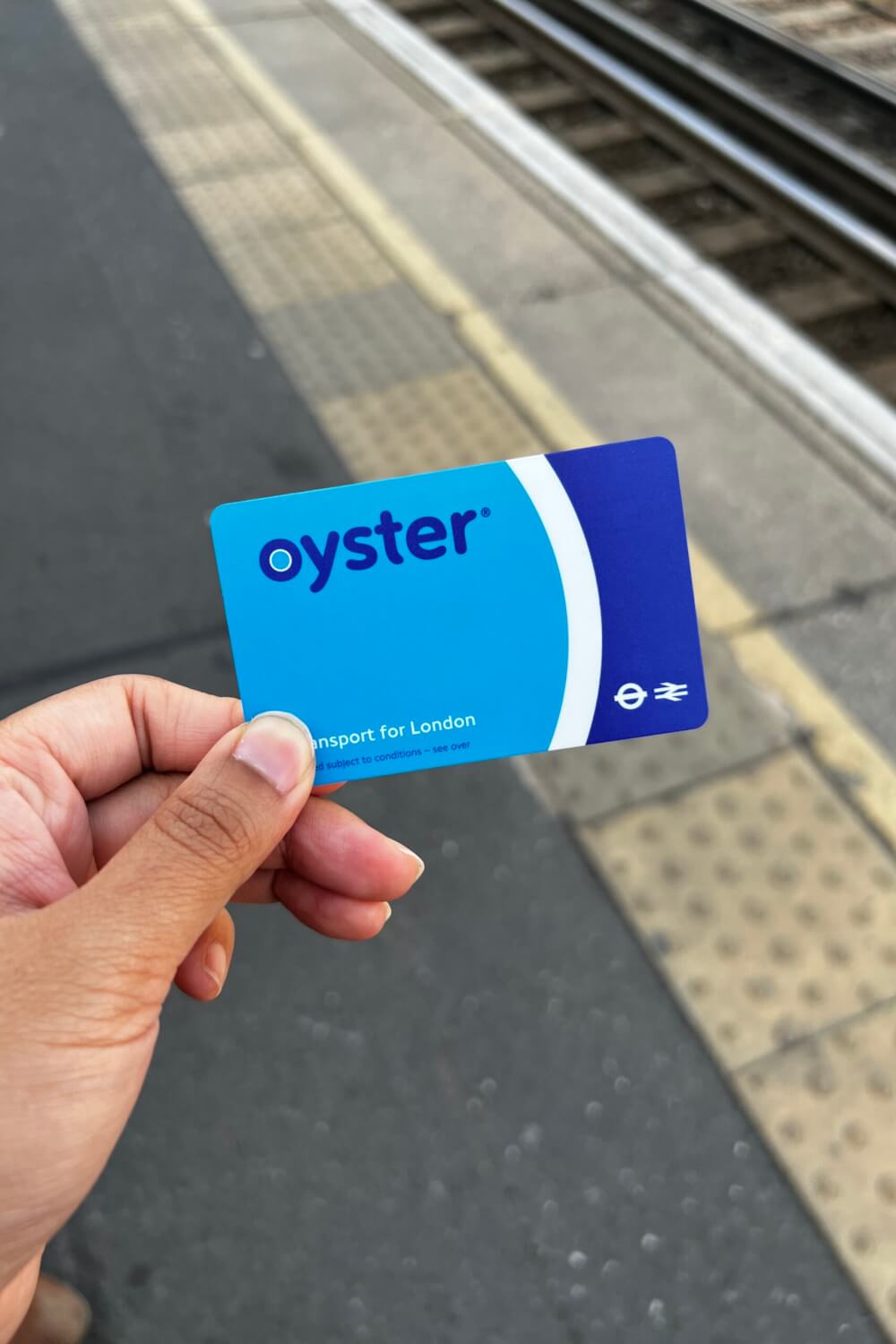
30. Remember to flag buses down and always press for your stop
On a random cultural note, you have to flag buses down here if you’re using public transport.
I wasn’t used to this because in Canada the buses automatically come to your stop if you’re standing there, but in England you generally have to wave them over and flag them down so they know to stop.
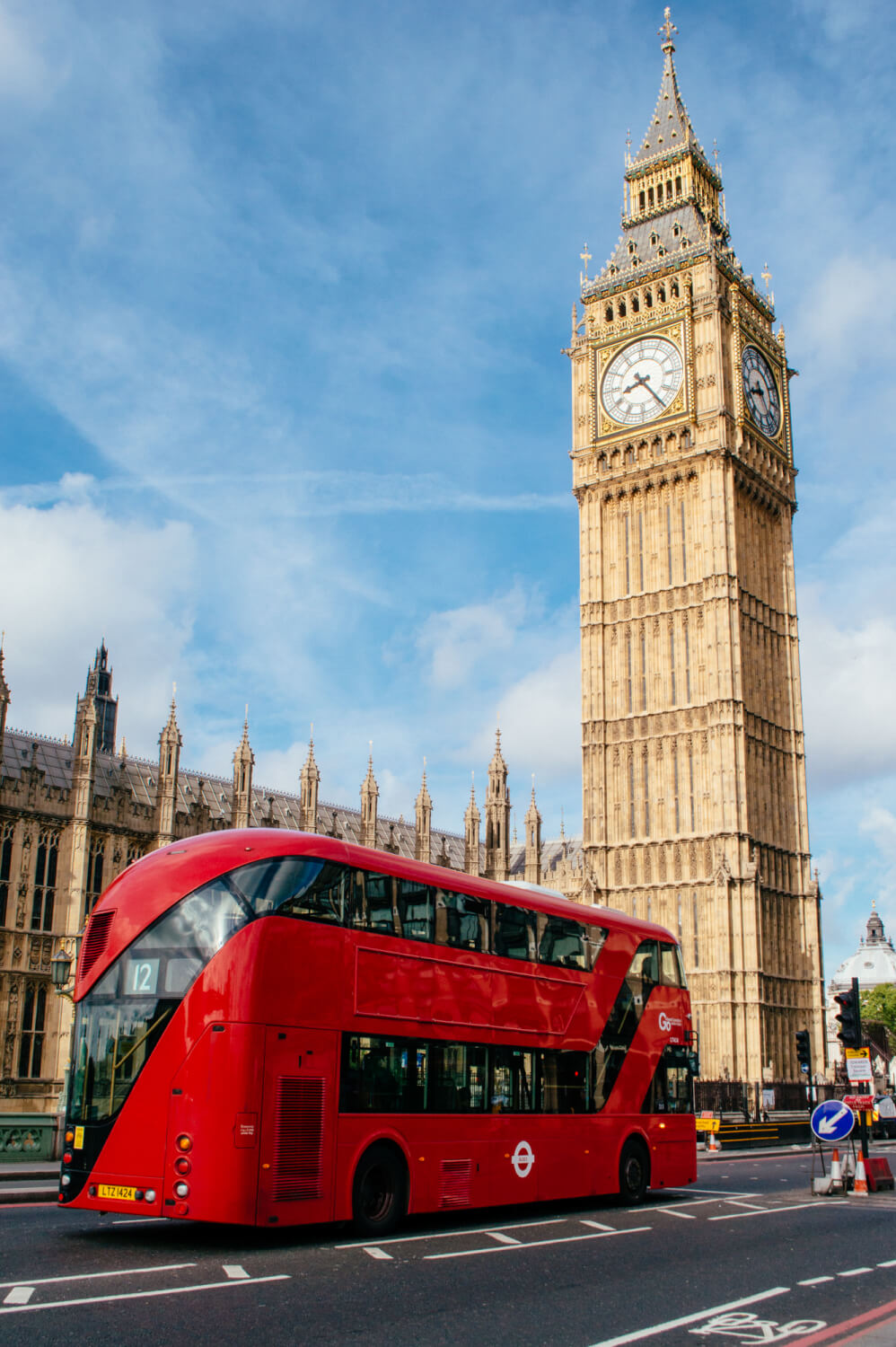
31. Know where to find free things to do in England
Looking for some more money-saving England tips? Well, here’s some beautiful budget-friendly news: I honestly think some of the best things to do in England are free.
In most major cities for instance, you’ll find many museums that are by donation. Out in the countryside, there are plenty of great walks that are free to enjoy (including national parks!)
And, all over the country, churches are for the most part free to visit as well. So, if you are looking for tips to travel England on a budget, remember just how many free things there are to choose from.
This is one of my top Europe backpacking tips – do not sleep on the many free things to see and do in England!

32. Learn the tricks to saving on paid attractions
That said, while there are tons of great free things to do, if you are visiting a place that is heavy on attractions like London, it might be worthwhile getting a sightseeing pass that includes many attractions for one set price.
Again, this is usually only worth it if you plan to visit a LOT of paid attractions, but if you do, then you can easily save a ton of money. I’ve used the London Pass in the past for instance and the value was unreal.
Of course, if you’re planning a longer stay in England, and you plan to cover a lot of the country, then it might also be worth looking into an annual membership for either National Trust, English Heritage or Historic Houses.
These are organizations that look after hundreds of historical attractions across the country, and when you’re a member, you get unlimited access for the year.
But again, this is only really worth it for those planning longer trips.
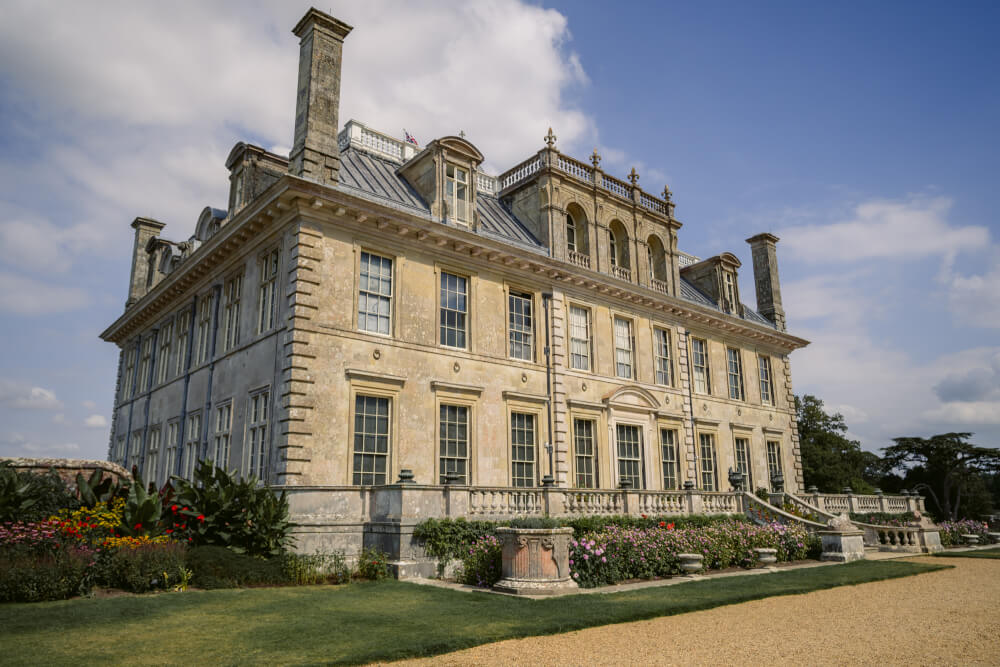
33. Don’t bring any suitcases you can’t carry
England is not a country well built for rolling suitcases.
Sure, there’s the big modern hotels that have functional elevators (lifts), and cities with smooth sidewalks (pavement)…… but more often than not, you’ll encounter rickety cobblestones, and older hotels which are converted from centuries-old houses which have unstable stairs and not a single lift to be found.
This is why I’d highly recommend bringing only suitcases that you can carry. This is especially crucial if you plan to use a lot of public transport, because there’s often situations where you have to lift your bag to go up stairs, to get on the train, to lift onto train luggage racks, etc.
So yes, make sure you can carry your suitcase!
My best tip for packing things into a smaller bag: Use Packing Cubes to squeeze more into your suitcase/backpack.
PS: If you’re overwhelmed with what to pack, I’ve already made some packing lists that you can use as a starting point!
- My Europe winter packing list
- My Europe summer packing list
- My versatile minimalist packing list
- My toiletries packing list
- My free International Travel Checklist
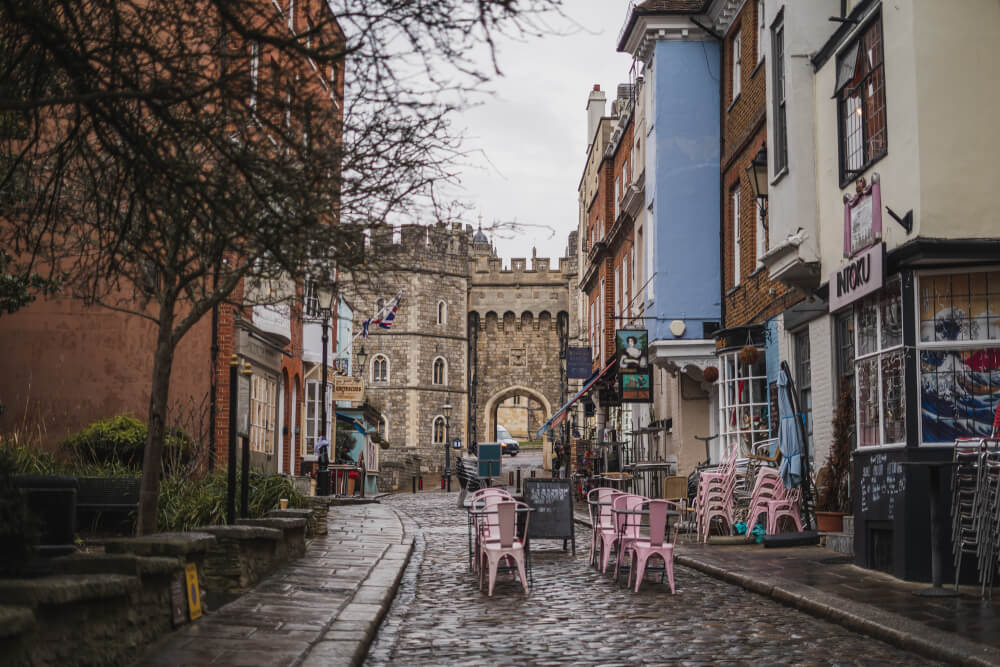
35. Bring a universal adapter
Power sockets in England are Type G, and if you’re visiting from overseas, odds are you’ll need an adapter for your plugs to fit.
I’d strongly recommend buying a universal adapter like this one if you don’t have one already.
It’s cheap, can be re-used for every trip, and covers you in all situations. Definitely some of the best money I’ve ever spent!
PS: In England, you often also need to turn “on” the power outlets for them to work – simply flip the switch that’s next to it.
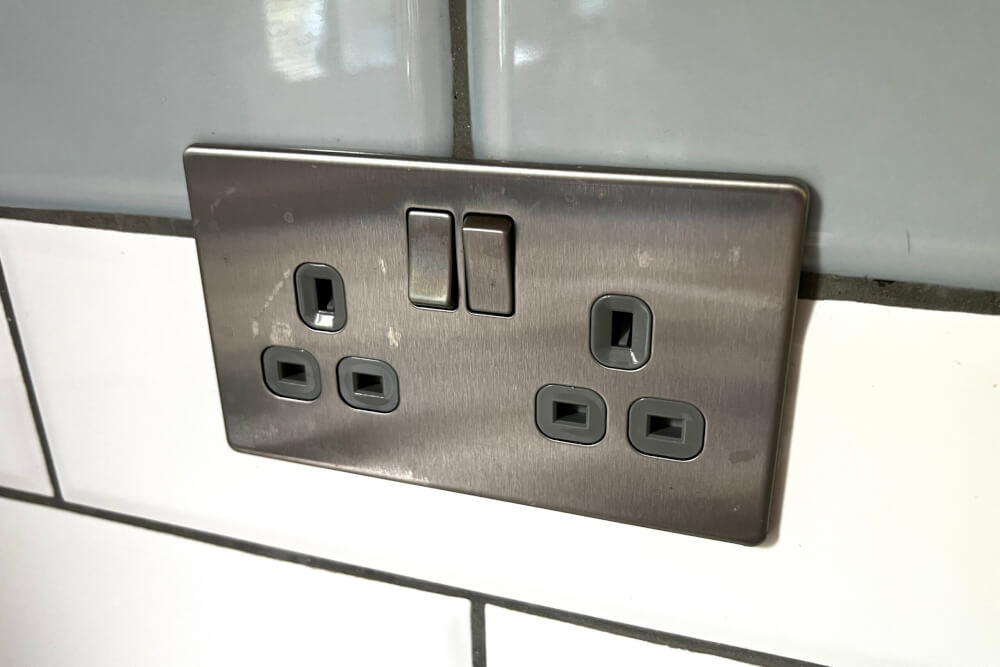
36. Pack a waterproof/windproof jacket
It rains a lot in England. You’ve probably heard that before…
But instead of just bringing a clunky umbrella and calling it a day, I’d highly advise packing a waterproof and windproof jacket, especially one with a hood.
This is because English wind can be as fierce as English rain, and getting your umbrella flipped inside out by wind is one of the most humiliating things on Earth. That and calling Greenwich “Green witch”, I suppose.

37. Get a mobile data plan
I feel like this England travel tip goes without saying, but in case you were on the fence about getting a data plan for England, get one. Please, for the love of pudding, get one.
These days, there are so many things in England that are dependent on Internet, like restaurant menus accessible only via QR code, or places that require you to register before entering (side eyeing you, BOXPARK Shoreditch).
Luckily, data is super cheap in the UK. If you want something cheap and easy, Three is great.
You can order their cards online in advance from Amazon or they also have stores all over the UK and even vending machines at the airport when you arrive. You can get a month 10 GB data pack with unlimited calls and text, for only 10 GBP so it’s really worth it!
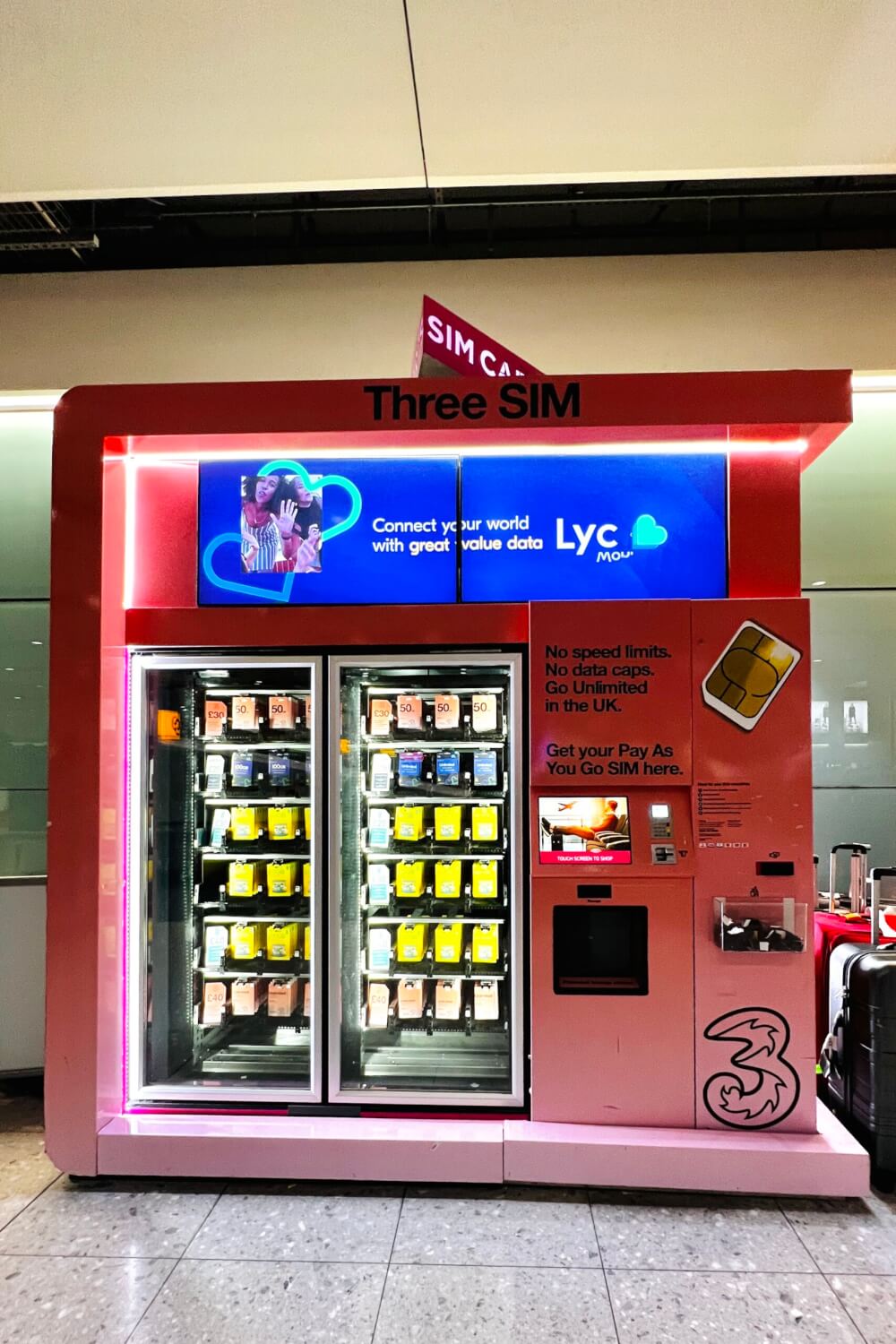
38. Try to not speak too loud
In England, North Americans generally have a reputation for being… loud.
And once you hear it yourself, you really can’t unhear it.
So if you’re out in public, try to lower the volume of your voice to closer match what’s around you (easier said than done, I know, but something to be mindful of).
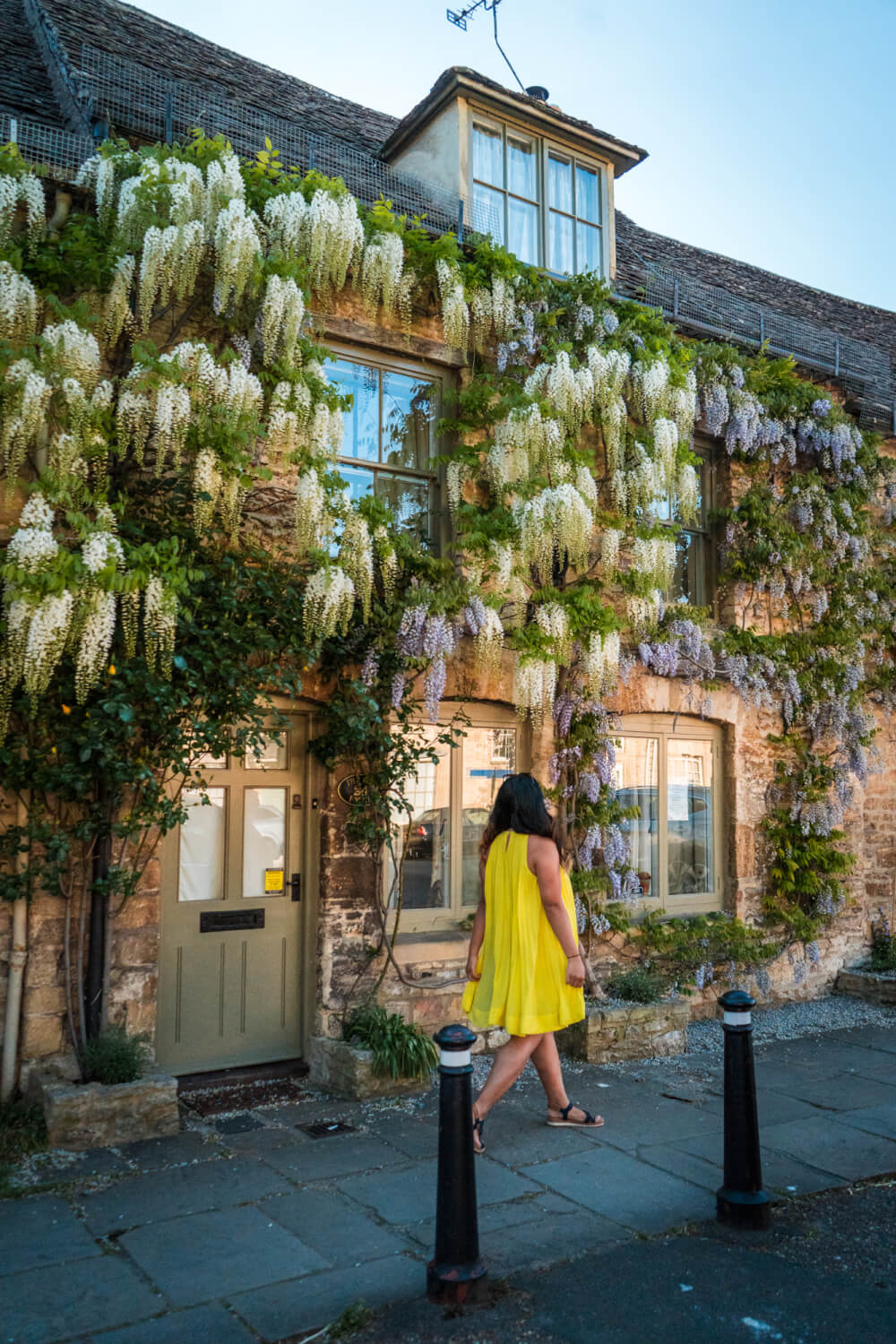
39. Binge on movies set in your destination before your visit
Last tip, it’s dorky but in advance of your trip, watch as many movies and TV shows set in the England as possible. Period, modern, Love Actually – whatever floats your boat. I promise it will make your visit a thousand times more magical.
After all, I could binge travel quotes all day but nothing will put me in more of a wanderlusty mood than a good piece of media with swoonworthy accents and idyllic scenery.
So, if you’d like to do the same before your trip, here are some travel movies or shows set in England:
- If you’re visiting London, watch Paddington, Paddington II, Notting Hill, Bridget Jones’s Diary
- If you’re visiting Bath, watch Bridgerton
- If you’re visiting Manchester and/or Liverpool, watch Peaky Blinders (I know it’s set in Birmingham, but it films mostly in other places)
- If you’re visiting idyllic little villages, watch The Holiday or Hot Fuzz (for something a little different)
- If you’re visiting Dorset, watch Broadchurch
- In general, watch Pride & Prejudice (or your Jane Austen adaptation of choice), Harry Potter, or your period dramas of choice
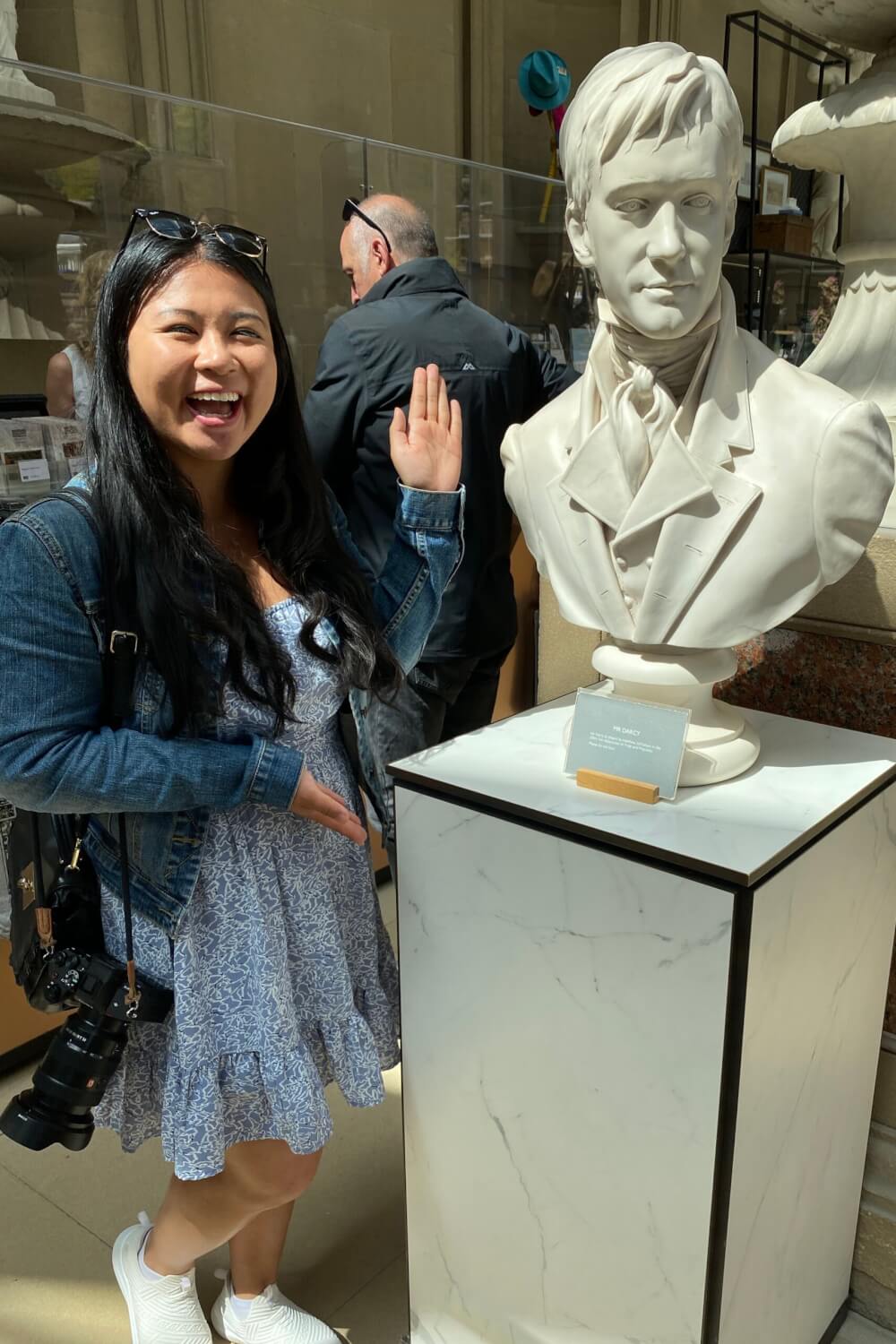
I hope this list of England travel tips was helpful!
Quite frankly, if you made it this far, you deserve some kind of medal! This was a VERY long list of tips for England, but if you have any more questions, let me know in the comments.



